DESTINATION


Brief Introduction to the Country and its Reputation in Medical Tourism
India has long been a captivating destination, not just for its cultural richness and historical grandeur, but increasingly for its advancements in healthcare. Recognized as one of the premier medical tourism destinations, India welcomes hundreds of thousands of medical tourists each year. The combination of cutting-edge technology, highly qualified healthcare professionals, and affordable treatments has solidified India's reputation as a medical tourism powerhouse. From elective procedures to critical surgeries, the country provides an expansive range of high-quality medical services to international patients.
Historical and Cultural Significance in Medicine
The roots of Indian medical practices can be traced back to its ancient systems like Ayurveda, Yoga, and Siddha, which are still prevalent and integrated into modern medicine. The country's historical commitment to medical research and surgery is exemplified by figures like Susruta, an ancient Indian physician often dubbed the "Father of Surgery." Modern Indian healthcare draws from this rich history, amalgamating traditional practices with contemporary medical science.
An International Hub for Medical Excellence
Indian hospitals and healthcare providers are increasingly being accredited by international organizations, underscoring their commitment to quality and excellence. The growth of private hospitals catering specifically to international patients is another feather in India’s medical cap.
Cutting-Edge Innovation and Technology
From robotic surgeries to pioneering techniques in cardiology and oncology, Indian healthcare providers are at the forefront of medical innovation. State-of-the-art facilities and medical equipment are now standard in many Indian hospitals, making the country an attractive option for those seeking advanced medical treatments not available or affordable in their home countries.
Popular Medical Procedures
List and brief descriptions of procedures.
India is especially known for offering quality treatments in the following areas:
- Cardiology (including heart transplants)
- Orthopedic surgeries (like knee and hip replacements)
- Cosmetic surgery
- Dental care
- Oncology (cancer treatments)
- Ophthalmology
Specializations or Pioneering Treatments
India has gained recognition for specialized treatments like Ayurvedic Therapies, stem cell therapy, and minimally invasive surgeries. Hospitals are also engaging in groundbreaking research and offering cutting-edge treatments in neurosurgery and cardiovascular care.
Top Hospitals & Clinics
Renowned hospitals.
- Apollo Hospitals
- Fortis Healthcare
- Max Healthcare
- Medanta - The Medicity
Accreditation and Affiliation Details
Most top-tier hospitals are accredited by the National Accreditation Board for Hospitals & Healthcare Providers (NABH) and many have Joint Commission International (JCI) accreditation.
Special Features, Awards, or Recognitions
Many Indian hospitals have won national and international awards for excellence in healthcare delivery and patient safety.
Cost Comparison
Comparative data.
On average, the cost of medical procedures in India is about 60-90% lower than in the United States, without compromising on quality. For example, a heart bypass surgery that costs upwards of $100,000 in the U.S. could cost as low as $5,000 in India.
Price Ranges
The following are approximate price ranges for some popular treatments:
- Knee Replacement: $4,000 - $9,000
- Hip Replacement: $5,000 - $10,000
- Heart Bypass: $5,000 - $8,000
Quality & Safety
Medical standards and practices.
India upholds high standards in medical practices, often on par with Western countries like the United States and the United Kingdom. The country has a rigorous medical education system that produces a large number of highly qualified doctors and nurses each year.
Accreditation Systems and Regulatory Bodies
Apart from international accreditations like JCI, Indian hospitals often seek accreditation from the National Accreditation Board for Hospitals & Healthcare Providers (NABH), a constituent board of Quality Council of India. This ensures that the hospitals meet stringent guidelines in terms of quality and patient safety.
Quality Checks and Patient Safety Protocols
Hospitals and clinics in India are equipped with the latest technology to ensure accurate diagnosis and effective treatment. Patient safety protocols are strictly followed, and quality checks are performed regularly to ensure the highest standards are maintained.
Patient Rights
Patients in India have the right to confidentiality, informed consent, and access to their medical records. Hospitals have dedicated International Patient Services departments that assist foreign patients in navigating healthcare in India.
Medical Visa Information
Guidelines and requirements.
International patients can apply for a Medical Visa, usually designated as ‘Med Visa’, which is specifically intended for medical treatments in India.
Duration, Documentation, and Application Process
A Medical Visa usually has a duration of up to one year or the period of treatment, whichever is less. Required documents often include a letter from a local doctor, a letter from the Indian hospital agreeing to treat you, and proof of financial stability. Online applications are generally processed within a week.
Travel-related Advisories or Restrictions
It is advisable to consult your home country’s embassy or consulate for any travel advisories or restrictions related to India, especially due to the evolving situation with the COVID-19 pandemic.
Cultural Considerations
Local customs and etiquette.
While the hospital staff is usually well-versed in international etiquette, understanding local customs like greetings and modest dress codes can enhance your stay.
Language Barriers
English is widely spoken in Indian medical facilities. However, translators for other languages can usually be arranged by the hospital.
Dietary Considerations
Indian cuisine is diverse and can be spicy. Most hospitals offer international cuisine to cater to the dietary needs of foreign patients.
Travel & Accommodation
Popular and recommended areas to stay.
Areas near major hospitals in cities like Delhi, Mumbai, Bangalore, and Chennai offer a range of accommodation options, from budget hotels to luxury suites.
Proximity to Medical Facilities
Staying close to the hospital is advisable for convenience, and many hospitals offer in-house accommodation options for international patients.
Transportation Facilities
Public transport in major Indian cities is generally good, with options ranging from taxis to metro services. Private car hire services are also readily available.
Post-procedure Relaxation and Recuperation Spots
India offers a plethora of tourist attractions, from serene beaches in Goa to the peaceful Himalayan regions, ideal for post-procedure relaxation.
Legal & Ethical Considerations
Legal rights of patients.
Patients have the right to legal recourse in case of medical negligence or malpractice, although the legal process can be lengthy.
Medical Malpractice Laws
India has a set of laws dealing with medical malpractice and negligence, aimed at protecting the patient's rights.
Ethical Considerations
Issues like organ transplants are strictly regulated, and only relatives can donate organs, with some exceptions.
Benefits & Risks
The major benefits of choosing India for medical treatment include cost-effectiveness, high quality of healthcare, and the availability of specialized treatments.
Risks or Concerns
Potential risks include varying standards among healthcare providers and long waiting times for certain treatments, though these are not common at leading hospitals.
Post-procedure Care
Post-operative care.
Indian medical institutions offer comprehensive post-operative care, including physical rehabilitation services.
Availability and Quality of Rehabilitation Centers
Several top-notch rehabilitation centers are available for procedures requiring long-term care, such as joint replacements.
Frequently Asked Questions (FAQs)
- Is it safe to have surgery in India? Yes, if you choose accredited hospitals, patient safety and quality are generally excellent.
- Do doctors in India speak English? In most top-tier hospitals, doctors are fluent in English.
- What is the cost comparison? Medical treatments in India can cost 60-90% less than in Western countries.
- What about aftercare? Comprehensive aftercare and rehabilitation services are available.
Global Provider Members

Hindi and English
Indian Rupee
1,370,825,550
India is typically very hot, with the hottest and driest months lying between March and June. The average temperature during this time is usually 90 degrees Fahrenheit. However, in the western part of India, the average temperature can be much higher. The coolest months are between December and February, with the average daily temperature fluctuating between 50-59 degrees Fahrenheit (10-15 degrees Celsius). The rainy (monsoon) season lasts from March until June. Because the boundaries of India span a large land area, it does not fit into only one climate zone.
Facilitators

New Delhi, India

Haryana, India
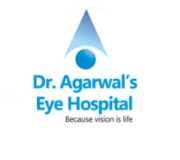
Karnataka, India

Mumbai, India

Maharashtra, India

Delhi, India

Uttar Pradesh, India

Telengana, India

Tamilnadu, India

Punjab, India
Maharastra, India
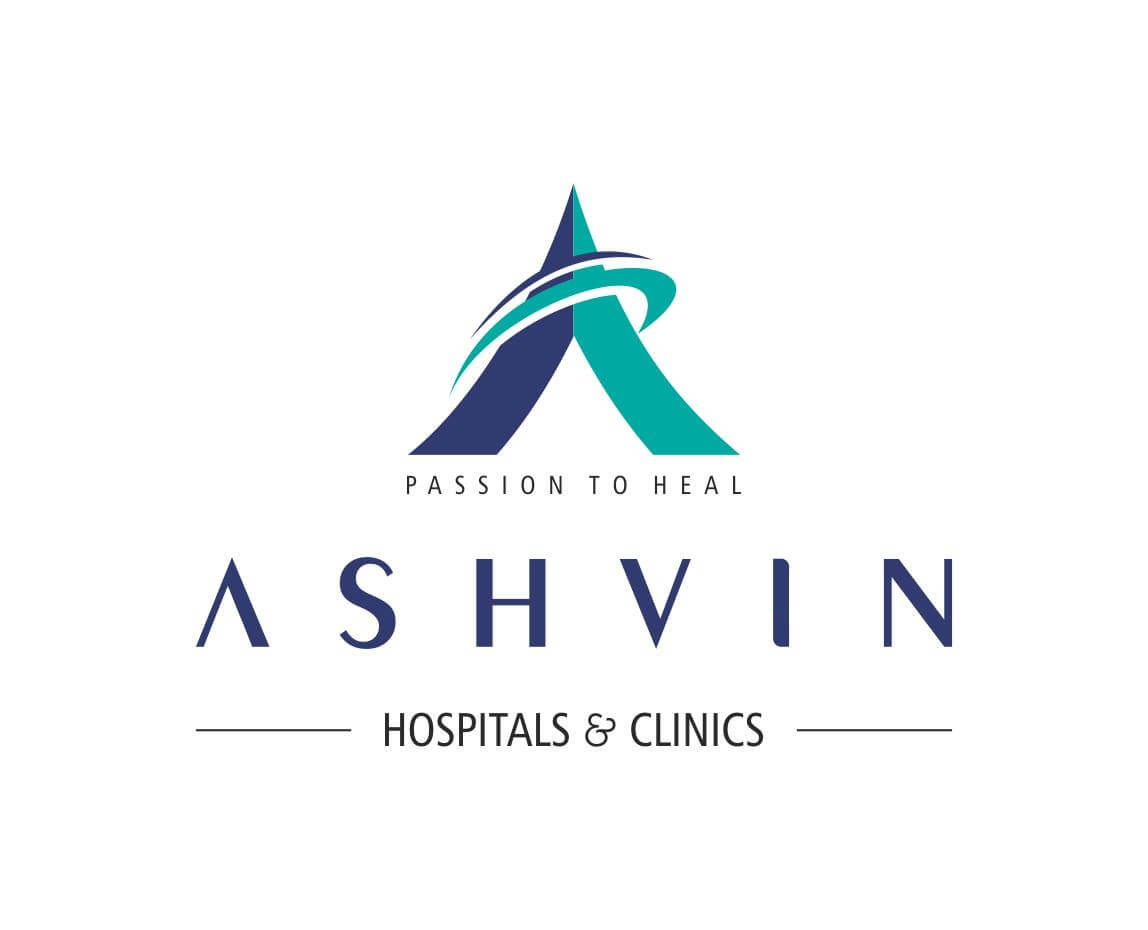
Kerala, India

Gujarat, India
Tamil Nadu, India
Dehli, India
Featured Treatments
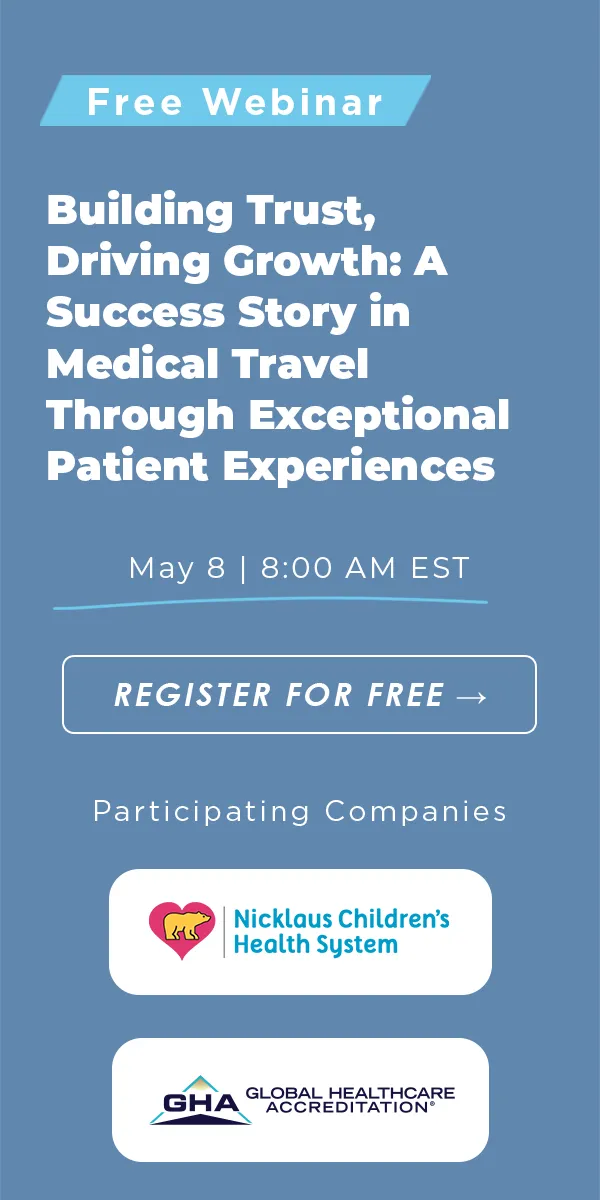
MedicalTourism.com
MedicalTourism.com is a free, confidential, independent resource for patients and industry providers. Our mission is to provide a central portal where patients, medical tourism providers, hospitals, clinics, employers, and insurance companies can all find the information they need. Our site focuses on patients looking for specific knowledge in the fields of medical tourism, dental tourism, and health tourism.
- Government of india
- Skip to main content

WELLNESS TOURISM
- The potential of wellness systems, developed through centuries of wisdom of this ancient civilization would be fully tapped. This is being done by positioning India as a centre of Ayurveda, Yoga, Sidha, Naturopathy, etc. together with the spiritual philosophy that has been integral to the Indian way of life.
- Ministry of Tourism has drafted guideline for wellness tourism. These guidelines address issues regarding making available quality publicity material, training and capacity building for the service providers, participation in international & domestic Wellness related events, etc.
- Mushrooming of wellness centers in the country have given rise to the concern for quality service. The Guideline for Accreditation of wellness centers have been developed by National Board for Accreditation of Hospitals & Healthcare Services (NABH) in consultation with AYUSH and released during the workshop on wellness tourism organized by Ministry of Tourism on 15 Feb 2011.
- The Ministry of Tourism has also extended its Market Development Assistance (MDA) scheme to wellness tourism service providers including accredited wellness centers. Presently the wellness centers accredited by State Tourism Departments are also eligible for the MDA. After the accreditation guidelines of NABH is in place, all wellness centers seeking MDA would be asked to be as close to the accreditation guidelines of NABH as possible.
- The initiative of accreditation of wellness centre by NABH and AYUSH has been greatly driven be the Ministry of Tourism as also consultation with the Wellness Tourism Service Providers, State Governments and other stakeholders.
MEDICAL TOURISM
Medical tourism (also called medical travel, health tourism or global healthcare) is a term used to describe the rapidly-growing practice of travelling across international borders to seek healthcare services. Services typically sought by travelers include elective procedures as well as complex surgeries, etc.
India holds advantage as a medical tourism destination due to following factors:
- Most of the doctors and surgeons at Indian hospitals are trained or have worked at some of the medical institutions in the US, Europe, or other developed nations.
- Most doctors and nurses are fluent in English.
- Top -of-the-line medical and diagnostic equipment from global international conglomerates is available at many Indian hospitals.
- Indian nurses are among the best in the world. Nearly 1000 recognized nurses-training centers in India, mostly attached to teaching hospitals, graduate nearly 10,000 nurses annually.
- Even the most budget-conscious traveler can afford first-rate service and luxury amenities
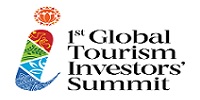
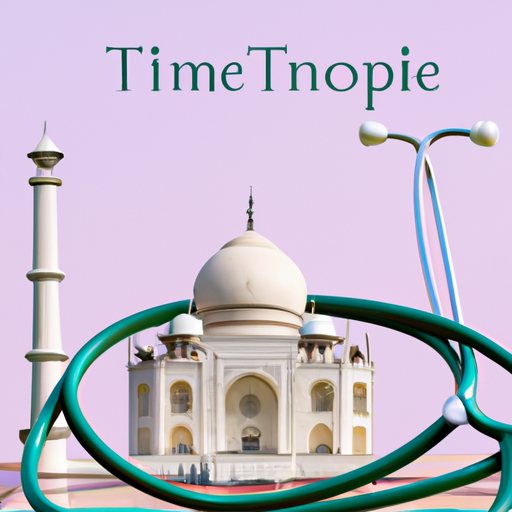
Medical Tourism In India: A Comprehensive Guide
Looking for top-notch medical treatments and a chance to explore a vibrant culture? Look no further than India, the ultimate destination for medical tourism. In our comprehensive guide, we will take you through all the ins and outs of this booming industry in India. From the world-class healthcare facilities to the diverse range of wellness options, we’ll uncover why India has become a sought-after hub for those seeking quality medical care coupled with an enriching cultural experience. So pack your bags and join us on this journey to discover the wonders of medical tourism in India.

Table of Contents
Overview of Medical Tourism in India
India has emerged as a top destination for medical tourism, attracting patients from all around the world seeking high-quality healthcare at affordable costs. With its state-of-the-art medical facilities, well-trained professionals, and a wide range of treatment options, India offers a comprehensive healthcare experience. From cardiac surgeries to orthopedic procedures, cosmetic surgeries to wellness treatments, India has become renowned for its expertise in various medical specialties.
India’s Emergence as a Top Medical Tourism Destination
Over the years, India has gained recognition as one of the leading hubs for medical tourism. The country offers advanced medical treatments at a fraction of the cost compared to Western countries. This has led to an increasing number of international patients traveling to India for their medical needs. The availability of world-class healthcare infrastructure, highly skilled doctors, and the use of cutting-edge technology has contributed to India’s growing reputation as a medical tourism hotspot.

Reasons Why People Choose Medical Tourism in India
There are several reasons why people choose medical tourism in India. Firstly, the affordability factor plays a significant role. Medical treatments in India are generally much cheaper compared to Western countries, making it an attractive option for patients looking to save on costs without compromising on quality. Secondly, India’s healthcare facilities are renowned for their high standards and state-of-the-art equipment. Patients can expect world-class treatment and care from experienced medical professionals. Lastly, India offers a diverse range of treatment options, making it a preferred choice for various medical specialties.
Major Cities and Hospitals for Medical Tourism in India
India’s major cities have established themselves as prominent destinations for medical tourism. Delhi, the capital city, is home to numerous renowned hospitals and healthcare facilities that cater to a vast array of medical needs. Mumbai, known as the financial capital, boasts of internationally acclaimed hospitals offering top-notch medical services. Bangalore, the IT hub of India, is also a popular choice due to its advanced healthcare infrastructure. Chennai and Kolkata are also worth mentioning for their well-established hospitals that provide world-class treatments.

Types of Medical Treatments Available in India
India offers a wide range of medical treatments across various specialties. Cardiology and cardiovascular surgeries are highly sought-after in India, with hospitals performing complex procedures with excellent success rates. Orthopedics and joint replacements are also prominent areas of expertise, with skilled surgeons providing advanced treatments. Cosmetic and plastic surgeries are another popular choice due to the affordability factor and the availability of skilled professionals. Additionally, India is known for its traditional healing practices, such as Ayurveda and wellness treatments, that attract those seeking holistic approaches to health.
Advantages of Medical Tourism in India
Affordability of medical treatments in india.
One of the primary advantages of medical tourism in India is the affordability factor. The cost of healthcare in India is significantly lower compared to Western countries, making it an attractive option for patients looking for cost-effective solutions without compromising on quality. Patients can often save up to 70% on medical treatments by choosing to undergo procedures in India. These savings can be utilized for other expenses, such as travel, accommodation, and post-treatment care.
High-Quality Healthcare Facilities and Infrastructure
India boasts world-class healthcare facilities and infrastructure that meet international standards. Renowned hospitals in India are equipped with state-of-the-art equipment and cutting-edge technology, ensuring that patients receive the best medical care possible. The healthcare sector in India continuously invests in upgrading infrastructure and adopting innovative practices, ensuring that patients have access to top-notch healthcare services.
Well-Trained and Experienced Medical Professionals
India is home to highly skilled and experienced medical professionals who have received training from prestigious institutions both within the country and abroad. Indian doctors and surgeons are known for their expertise, precision, and success rates in various medical procedures. Many doctors practicing in India have international exposure, further enhancing the quality of medical care offered.
Short Waiting Periods for Treatments
One of the significant advantages of medical tourism in India is the minimal waiting periods for treatments. In Western countries, patients often have to wait for extended periods to undergo certain medical procedures. However, in India, patients can experience shorter waiting times, allowing them to receive timely medical attention. This quick turnaround time is beneficial, especially for patients in need of urgent treatment or seeking relief from prolonged medical conditions.

Popular Destinations for Medical Tourism in India
India’s major cities serve as popular destinations for medical tourism due to their excellent healthcare infrastructure and expertise. Here are some key cities for medical tourism in India:
Delhi, the capital city, hosts numerous prestigious hospitals and medical centers. Renowned institutions such as All India Institute of Medical Sciences (AIIMS) and Apollo Hospitals offer a wide range of treatments and attract patients from all over the world.
Mumbai, the financial capital, is home to advanced healthcare facilities that provide cutting-edge treatments. Hospitals like Jaslok Hospital and Lilavati Hospital are known for their expertise in various medical specialties.
Bangalore, known as India’s Silicon Valley, has become a preferred choice for medical tourism due to its world-class hospitals and skilled medical professionals. Manipal Hospital and Fortis Hospital are among the renowned healthcare providers in the city.
Chennai is known for its advanced healthcare infrastructure and expertise in various medical fields. Apollo Hospitals, Sankara Nethralaya, and Fortis Malar Hospital are some of the leading hospitals in Chennai providing top-notch medical services.
Kolkata, the cultural capital, has several reputable hospitals that offer a wide range of medical treatments. Hospitals like Apollo Gleneagles Hospital and Fortis Hospital provide comprehensive healthcare services to both domestic and international patients.
Key Medical Specialties in India
India excels in various medical specialties, attracting patients from around the world seeking advanced treatment options. Here are some key medical specialties in India:
Cardiology and Cardiovascular Surgeries
India is renowned for its expertise in cardiac care and cardiovascular surgeries. Hospitals like AIIMS, Apollo Hospitals, and Fortis Escorts Heart Institute are known for their exceptional success rates in complex cardiac procedures.
Orthopedics and Joint Replacements
Orthopedic treatments and joint replacements are highly sought-after in India. Skilled orthopedic surgeons in hospitals such as Max Super Specialty Hospital and Narayana Health perform advanced procedures, providing relief to patients suffering from joint-related conditions.
Cosmetic and Plastic Surgeries
India is emerging as a popular destination for cosmetic and plastic surgeries, as it offers high-quality procedures at affordable prices. Skilled surgeons in hospitals like Apollo Cosmetic Clinic and Fortis Hospitals specialize in various cosmetic procedures, including rhinoplasty, liposuction, and breast augmentation.
Ayurveda and Wellness Treatments
India is world-renowned for its ancient healing system, Ayurveda. Many patients seeking holistic wellness and rejuvenation experiences choose India for Ayurvedic treatments. Wellness centers and hospitals like Kairali Ayurvedic Healing Village and Soukya International Holistic Health Center provide authentic Ayurvedic treatments and therapies.

Patient Experience and Care
India’s medical tourism industry places great emphasis on providing a seamless and comfortable experience for international patients. From pre-arrival planning to post-treatment follow-up, patients receive comprehensive care throughout their medical journey. Here are some aspects of patient experience and care:
Pre-Arrival Planning and Assistance
Medical tourism facilitators and hospitals in India assist patients with pre-arrival planning, including medical visa applications, scheduling appointments, and coordinating treatment plans. They serve as a point of contact, ensuring that all necessary arrangements are made for a smooth and hassle-free experience.
Accommodation and Transportation Arrangements
Medical tourists in India are provided with various accommodation options catering to different budgets and preferences. Many hospitals have tie-ups with nearby hotels, ensuring that patients have a comfortable stay during their treatment period. Additionally, transportation arrangements, including airport transfers and commuting to and from hospitals, are also taken care of by service providers.
Language and Translation Support
India acknowledges the diversity of its patient base and understands the importance of effective communication. Hospitals and medical tourism providers offer language assistance and translation services to overcome any language barriers that patients may face. This ensures clear communication between medical professionals and patients, minimizing any potential misunderstandings.
Post-Treatment Follow-Up and Care
After the completion of medical procedures, patients require post-treatment follow-up and care. Medical providers in India offer comprehensive post-treatment support, including consultations, medication management, and guidance on post-operative care. This ensures that patients have a smooth recovery process and receive the necessary guidance for long-term care.
Cost and Financial Considerations
One of the primary reasons patients opt for medical tourism in India is the significant cost savings compared to Western countries. Here are some important cost and financial considerations:
Comparison of Treatment Costs in India and Western Countries
Medical treatments in India are considerably cheaper compared to Western countries. Patients can save a substantial amount on their medical expenses by choosing to undergo procedures in India. Cost comparisons of specific treatments between India and Western countries can help patients make informed decisions regarding their healthcare.
Health Insurance Coverage and Reimbursement Options
Many international health insurance providers offer coverage for medical treatments in India. Patients are advised to check their insurance policies for details on coverage and reimbursement options. Medical tourism facilitators can assist in navigating insurance-related queries and providing guidance on reimbursement options.
Payment Methods and Currency Exchange
India accepts various modes of payment for medical treatments, including cash, credit cards, and wire transfers. Patients are advised to check with the hospital or medical tourism provider regarding accepted payment methods. Additionally, currency exchange services are available at airports and banks for patients who need to convert their currency to Indian Rupees.
Travel and Tourism in India
Medical tourists in India have the opportunity to explore the country’s rich cultural heritage and vibrant tourist attractions. Here are some details regarding travel and tourism in India:
Tourist Attractions and Cultural Experiences in India
India offers a myriad of tourist attractions, including historical monuments, UNESCO World Heritage sites, beautiful landscapes, and diverse cultural experiences. From the stunning Taj Mahal to the serene backwaters of Kerala, medical tourists can indulge in exploring India’s rich history and natural beauty.
Visa Requirements and Travel Arrangements
International patients visiting India for medical treatments are required to obtain a medical visa. The visa application process involves providing relevant medical documentation and an invitation letter from the hospital or medical tourism provider. Medical tourism facilitators can assist patients in the visa application process and provide guidance on any additional travel requirements.
Local Transportation and Tour Guides
India has a well-developed transportation network, offering various options for local travel during medical tourism visits. Taxis, app-based cab services, and public transportation are easily accessible in major cities. Additionally, hiring a tour guide can enhance the experience, providing insights into local culture, traditions, and places of interest.
Safety and Quality Assurance
India’s healthcare industry places great emphasis on safety and quality assurance to ensure the well-being of patients. Here are some aspects of safety and quality assurance:
Accreditation and Certification of Hospitals in India
Many hospitals in India are accredited by organizations such as the Joint Commission International (JCI) and the National Accreditation Board for Hospitals and Healthcare Providers (NABH). These accreditations ensure that hospitals meet international standards of patient care, safety, and quality.
Patient Safety Standards and Procedures
Safety protocols and procedures are in place to ensure the well-being of patients. From infection control measures to stringent quality control systems, hospitals in India prioritize patient safety. Experienced medical professionals follow established guidelines and protocols to deliver safe and effective healthcare.
Tips for Choosing a Reliable Medical Tourism Provider
When choosing a medical tourism provider in India, it is essential to consider factors such as reputation, experience, and patient reviews. Researching the provider’s track record, affiliations with reputed hospitals, and the expertise of their medical professionals can help patients make informed decisions. Additionally, seeking recommendations from trusted sources or engaging with medical tourism facilitators can provide valuable insights into reliable service providers.
Cultural Sensitivity and Etiquette
Being culturally sensitive and observing proper etiquette is crucial when seeking medical treatment in a foreign country like India. Here are some aspects of cultural sensitivity and etiquette to keep in mind:
Understanding Indian Culture and Norms
India is a diverse country with varying cultural practices and norms. Familiarizing oneself with basic aspects of Indian culture, such as greetings, gestures, and dress codes, can help patients navigate social interactions smoothly. Respecting and embracing the local culture can contribute to a positive and enriching experience.
Etiquette for Interacting with Medical Professionals
Maintaining a respectful and courteous attitude when interacting with medical professionals is important. Addressing doctors and medical staff with the appropriate honorifics, asking relevant questions, and carefully following their instructions showcase an understanding of professional customs and foster a harmonious doctor-patient relationship.
Respecting Local Customs and Traditions
India is known for its rich traditions, customs, and religious practices. Being mindful of local customs and traditions, such as removing footwear before entering certain spaces or following appropriate dress codes in religious sites, showcases respect for the local culture. Adhering to these customs can foster positive interactions with locals and add to the overall experience.
Medical tourism in India offers a comprehensive healthcare experience, combining world-class treatments with a vibrant cultural immersion. With its affordable costs, high-quality healthcare facilities, well-trained professionals, and a diverse range of medical specialties, India has emerged as a top destination for patients seeking advanced medical treatments. The country’s major cities, including Delhi, Mumbai, Bangalore, Chennai, and Kolkata, offer excellent healthcare infrastructure and expertise. From cardiac surgeries to cosmetic procedures and traditional healing practices, India caters to various medical needs. With a focus on patient experience and comprehensive care, medical tourists receive assistance in pre-arrival planning, accommodation arrangements, language support, and post-treatment follow-up. The affordability factor, along with the high quality of healthcare, makes India an attractive choice for medical tourism. As the industry continues to evolve and advancements are made, the future of medical tourism in India looks promising. Whether it is for a specific medical procedure or a wellness retreat, exploring medical tourism in India can provide an excellent healthcare experience coupled with a glimpse into the country’s rich culture and heritage.
Indian Culture Team
- [email protected]
- +91 99109 32162

Healthcare Beyond Borders: The Rise of Medical Tourism in India
India’s emergence as a premier medical hub: reviving medical tourism post-covid.
The global healthcare landscape has witnessed a remarkable shift in recent years, with India gaining recognition for providing high-quality medical services at significantly lower costs to patients travelling worldwide. However, the outbreak of the Covid-19 pandemic and subsequent travel bans severely impacted the influx of medical tourists into the country.
The Tourism Ministry reported a staggering negative growth rate of 79.4% in 2020. Despite this setback, the situation is gradually improving as efforts to combat the pandemic yield positive results. Market insights suggest a robust 19% compound annual growth rate (CAGR) for the demand for medical tourism in India by 2022.
What makes India an increasingly popular destination for medical treatment?
The country’s healthcare industry offers a unique blend of modern and traditional medicine, setting it apart from competitors. Firstly, India boasts world-class doctors and hospitals that provide treatments at a fraction of the cost compared to other nations. Secondly, India’s ancient systems of medicine, known as AYUSH (Ayurveda, Yoga, Panchakarma, Rejuvenation Therapy, etc.), are gaining immense popularity globally.
To further enhance the credibility of AYUSH products and promote India’s medical tourism sector, Prime Minister Modi recently announced plans to launch an AYUSH Mark. India’s medical services and facilities also adhere to standards set by reputable organizations such as WHO, the World Health Organization, and the US Food and Drug Administration (US FDA).
Significant investments are required to enhance the healthcare industry’s infrastructure and equipment, making them more appealing to international patients. Proper infrastructure and standardization in the tourism industry, mainly guest house services, are crucial to ensure patients’ safety and minimize the risk of infections. Additionally, there is a vast opportunity to offer Indian health insurance to foreign patients, which has the potential to generate an additional $9 billion in patient inflow to India.
The government is leaving no stone unturned to maximize the potential of the medical tourism industry. The objective is to make India the number one destination for medical tourism, tripling its revenue to $13 billion within four years. To support this vision, the government has proposed an outlay of US$ 28.7 billion for health and well-being, a substantial increase of 137% compared to the previous year’s budget allocation.
The Ministry of Health and Family Welfare has taken several measures to facilitate medical tourism:
- Special Medical Visas for healthcare purposes have been made available in 165 countries.
- Establishing a feedback mechanism aims to gather testimonials from medical tourists visiting India, providing credible information and convenience.
The ‘Heal in India’ initiative seeks to position the country as a global medical and wellness tourism destination. This initiative will enable foreigners and those seeking medical assistance to access a comprehensive list of hospitals offering their desired treatments through a user-friendly online portal. It will be a one-stop shop, covering treatment package costs, visa applications, grievance redressals, and feedback. Additionally, the initiative aims to create a database of healthcare professionals which includes dedicated doctors, nurses, and pharmacists, allowing them to specify their interest in providing services abroad, thus facilitating India’s diversification of operations.
The Ministry of Tourism has also taken serious steps to promote medical tourism
The Marketing Development Assistance Scheme (MDA) provides financial support to approved tourism service providers, enhancing tourist facilities.
Publicity materials, including brochures and CDs, have been extensively used to promote medical and health tourism under the Ministry of Tourism’s “Incredible India Campaign.” The campaign has successfully showcased the benefits of yoga, Ayurveda, and wellness practices across print, electronic, internet, and outdoor media.
As the world emerges from the Covid-19 pandemic, the demand for healthcare services is expected to surge, presenting India with a tremendous opportunity to attract medical tourists from Europe, the Americas, and beyond.
With the government’s unwavering commitment to making India the hub of medical tourism and the rising demand, the country is poised to become the ultimate destination for all medical tourists. India’s leadership in saving millions of lives will drive job creation and generate over $13 billion in foreign exchange, firmly establishing its position as a global healthcare leader.
How UniMediks can help you?
UniMediks are pivotal in facilitating affordable treatment for foreign nationals in India. Here’s how UniMediks can help:
Extensive Network of Medical Providers: UniMediks has partnered with renowned hospitals, clinics, and healthcare professionals across India. This vast network allows us to connect foreign nationals with the best medical providers offering affordable treatment options without compromising quality.
Customized Treatment Packages: UniMediks understands that each patient has unique healthcare needs. We work closely with medical providers to create customized treatment packages that align with patients’ requirements and budgets. These packages often include comprehensive medical services, accommodation, transportation, and other necessary arrangements, ensuring a hassle-free experience.
Cost Transparency and Negotiation: UniMediks believes in transparency regarding healthcare costs. We provide detailed cost breakdowns of treatment procedures, consultations, medications, and additional services. Our team negotiates with medical providers to secure competitive pricing, helping foreign nationals access affordable treatment options.
Assistance with Visa and Travel Arrangements: Traveling to an international country for medical treatment can be daunting. UniMediks offers guidance and support throughout the visa application process, ensuring a smooth and hassle-free journey for patients. We also assist with travel arrangements, including flight bookings, airport transfers, and accommodation, making the entire experience convenient and stress-free.
Language and Cultural Support: Overcoming language and cultural barriers is essential for foreign nationals seeking treatment in India. UniMediks provides language interpretation services to ensure effective communication between patients and healthcare providers. We also offer cultural guidance, helping patients navigate the cultural nuances and adapt to the local environment.
Post-Treatment Follow-up: UniMediks recognizes the importance of post-treatment care and follow-up. We facilitate regular communication between patients and medical providers, ensuring that patients receive the necessary support and guidance even after returning to their home countries.
Quality Assurance: UniMediks works only with accredited and reputable healthcare providers in India. We carefully evaluate the quality of services and infrastructure our partner hospitals and clinics offer. This commitment to quality ensures that foreign nationals receive safe and effective treatment from trusted medical professionals.
By leveraging our expertise and network, UniMediks strives to make affordable treatment in India accessible to foreign nationals. Our comprehensive support throughout the medical journey, combined with competitive pricing and quality assurance, enables patients to receive the care they need at affordable costs.
Recent Posts

Medical Tourism Companies in India: Indian Companies that Have Transformed Healthcare Access

Discover the Best Orthopedic Hospital in India: A Comprehensive Guide

Best Orthopedic Doctors in India: Expertise and Excellence

Navigating Excellence in Cardiac Care Choosing the Best Cardiac Surgeon in India

Navigating Healthcare: Understanding the Cost of Cancer Treatment in India


A Comprehensive Guide: Uterus Cancer Treatment Cost in India

Seeking the Best Mental Care Spotlight on the Best Mental Hospitals in India
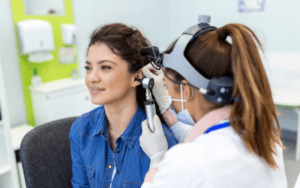
Achieving Healthier Ears, Nose, and Throat: A Look at the Best ENT Hospital in India
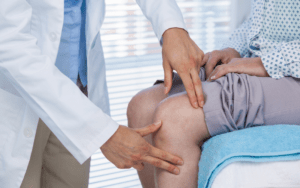
A Review of the Top 10 Orthopedic Doctors in India

Unveiling the Economic Aspect of Cancer Treatment in India
Top hospitals.
- Medanta The-Medicity Hospital
- Indraprastha Apollo Hospital
- Fortis Escorts Heart Institute
- Manipal Hospital
- BLK-Max Hospital
- Batra Hospital & Medical Research Centre
- Jaypee Hospital
Top Procedures
- Heart Valve Replacement Surgery in India
- Knee Replacement Surgery In India
- Liver Transplant In India
- Disc Replacement Surgery in India
- Cardiac Valve Replacement Surgery in India
- Whipple Surgery in India
- Brain Cancer Treatment in India
Top Specialities
- Heart Hospital in India
- Orthopaedics Hospital in India
- Neurology Hospital in India
- Urology Hospital in India
- Bone Marrow Transplant Hospital in India
- IVF Treatment Hospital in India
- Gastroenterology Hospital in India
Top Doctors
- Dr. Rana Patir
- Dr. Sudheer Kumar Tyagi
- Dr. Hitesh Garg
- Dr. Puneet Girdhar
- Dr. Z.S Meharwal
- Dr. Yugal Kishore Mishra
- Dr. Shubash Chandra
UniMediks offers the most affordable and finest treatment packages for international patients seeking medical care in India. With our unique patient first strategy, we help you get access to quality facilities that meet your needs without breaking bank accounts or giving up on treatments because they’re too expensive!
- Patient Stories
- Get a free quote

UniMediks Support Online
Subscribe To Our Weekly Newsletter
Find us here.

Welcome to UniMediks
- Skip to primary navigation
- Skip to main content
- Skip to primary sidebar
UPSC Coaching, Study Materials, and Mock Exams
Enroll in ClearIAS UPSC Coaching Join Now Log In
Call us: +91-9605741000
Medical Tourism in India
Last updated on January 14, 2023 by ClearIAS Team
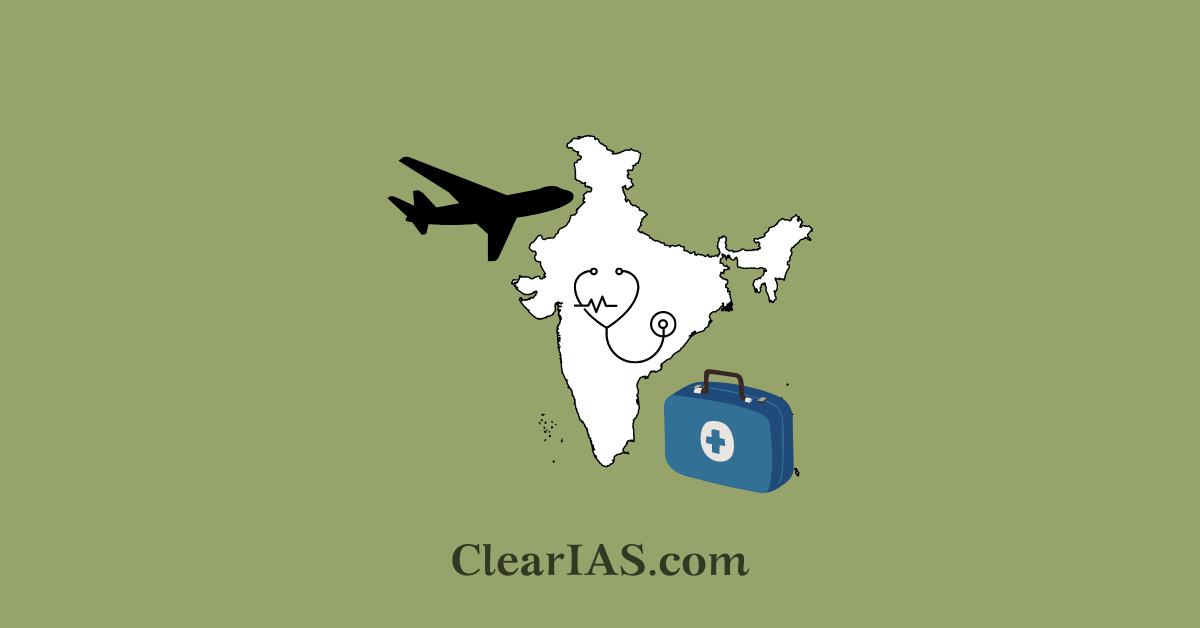
Medical tourism is described as any activity that involves a foreign visitor traveling and spending at least one night at the destination to rejuvenate, restore, or maintain health through medical intervention. Since the last decade of the 20th century, India has emerged as a global leader in the medical tourism sector. Read here to learn about the growth of medical tourism in India.
Over the past decade, India has gained a reputation for providing high-quality medical service at low costs to medical tourists traveling from across the globe.
However, with the travel bans during the covid-19 pandemic , the influx of medical tourists had dipped. According to the Tourism Ministry, India registered a negative growth of 79.4% in 2020.
Although, the situation looks positive once more owing to the efforts made to handle the pandemic situation. Market insights suggest the demand forecast to increase at a robust 19 % CAGR in 2022.
Table of Contents
Medical tourism in India
India’s healthcare industry offers a combination of both modern and traditional forms of medicine which sets the country apart from others.
- First, it has a set of world-class doctors and hospitals that provide treatment at fractional rates when compared to other countries.
- Secondly, India’s systems of medicine: AYUSH i.e., Ayurveda, Yoga, Panchakarma, Rejuvenation Therapy, etc, which are the most ancient forms of medicine, are now gaining immense popularity globally.
The government also recently announced plans to launch an AYUSH Mark which is a mark to provide credibility to AYUSH products in India and promote India’s medical tourism sector.
Additionally, the other medical services and facilities are also backed by the World Health Organisation (WHO) and the US Food and Drug Administration (US FDA).
India’s healthcare industry has advanced significantly over the past 30 years, as seen by the notable accomplishments it has made.
- One of the industries that have contributed the most to revenue and are expanding quickly is healthcare.
- Both public and private providers support the healthcare industry. Over the past few years, national health policies have been crucial in establishing a more inclusive healthcare system to achieve structured Universal Health Coverage (UHC).
- In addition, India provides less expensive treatment alternatives than the US and the UK without sacrificing the standard of healthcare. About one-fourth, less is spent on therapy in India than it is in the United States.
In terms of alternate medical treatment, the Indian medical treatment systems of yoga, ayurveda, rejuvenation therapy, and panchakarma are among the most ancient methods of medical treatment in the world.
The southern state of Kerala has developed medical tourism services as one of its core products for promoting tourism in the region.
Based on the Medical Tourism Index 2020-21, India is ranked 10th out of the top 46 countries, 12th out of the world’s top 20 wellness tourism markets, and 5th out of 10 wellness tourism destinations in Asia-Pacific.
- India boasts 39 Joint Commission International (JCI) accredited and 657 National Accreditation Board for Hospitals & Healthcare Providers (NABH) accredited hospitals.
India holds an advantage as a medical tourism destination due to the following factors:
- Most of the doctors and surgeons at Indian hospitals are trained or have worked at some of the medical institutions in the US, Europe, or other developed nations.
- Most doctors and nurses are fluent in English.
- Top-of-the-line medical and diagnostic equipment from global international conglomerates is available at many Indian hospitals.
- Indian nurses are among the best in the world. Nearly 1000 recognized nurses-training centers in India, mostly attached to teaching hospitals, graduate nearly 10,000 nurses annually.
- Even the most budget-conscious traveler can afford first-rate service and luxury amenities
Most of the tourists are from Asian or African countries such as Sri Lanka, Bangladesh, Nepal, Maldives, Indonesia, and Kenya, among others.
Chennai, Mumbai, New Delhi, Ahmedabad, and Bengaluru are the top 5 medical tourism destinations in India.
Wellness tourism
Wellness Tourism includes travel for a less stressful lifestyle, promoting a healthier, and finding balance in one’s life.
Ayurveda, Yoga, meditation, Panchakarma, and Rejuvenation Therapy are among the most ancient systems of medical treatment in India and the best way to promote Wellness Tourism.
The Ministry of Tourism has drafted guidelines for wellness tourism. These guidelines address issues regarding making available quality publicity material, training and capacity building for the service providers, participation in international & domestic Wellness related events, etc.
Mushrooming of wellness centers in the country has given rise to the concern for quality service.
- The Guideline for the Accreditation of wellness centers has been developed by National Board for Accreditation of Hospitals & Healthcare Services (NABH) in consultation with AYUSH and released during the workshop on wellness tourism organized by the Ministry of Tourism in 2011.
- The Ministry of Tourism has also extended its Market Development Assistance (MDA) scheme to wellness tourism service providers including accredited wellness centers.
Impact of Covid-19 on medical tourism
Planned hospital operations decreased by as much as 80% during the state-wide lockdown in India caused by the new coronavirus outbreak, while unplanned systems decreased by 66%.
With the government of India’s assistance, the healthcare sector launched a comprehensive response strategy to combat the epidemic.
- Specialized COVID-19 hospitals and isolation facilities were established, and resource mapping using technology was started.
- The Indian government created several programs and used technology to combat the pandemic.
- The Aarogya Setu app was utilized across the nation to improve contact tracing, syndromic mapping, and infection self-evaluation.
- India not only met its own needs but also stepped up to help other nations during these difficult times.
Despite having several initiatives in place, the Medical Tourism industry of the country still faces some serious challenges.
- One of the major challenges that India is facing is promoting and creating awareness about state-of-the-art facilities in India.
- India is witnessing strong competition from destinations like Thailand, Malaysia, Singapore, Turkey, and South Korea with low-cost options.
- In India, there is a lack of cohesiveness amongst the major players in the industry to come together and represent India on a world platform to acquire newer customers.
- Apart from these, inconsistent fee structure and lack of transparency in billing to foreign patients, and absurdly high margins to trade to refer patients are some of the challenges.
- Most Indian hospitals are also facing a lack of trust from foreign patients. The hospitals have observed poor hygiene awareness in medical attendants, unhygienic food handling, and lack of good hospitality services, heterogeneous pricing of services, and industry standards.
The government can play a vital part to upgrade the medical tourism sector. But the industry is facing the following problems which are caused by the governments. They are:
- no regulations
- taxation anomalies
- bureaucratic roadblocks
- no work on land reforms
- lack of long-term investor-friendly policies
- instability concerning terrorism and communal tensions.
On the part of insurance and allied services, the medical tourism industry in India is also facing some key bottlenecks. They are:
- inadequate insurance cover
- the underdeveloped insurance market in India
- insurance frauds
- overseas companies refusing reimbursement.
The following challenges, due to the infrastructural parts of the medical tourism sector in India, are:
- lack of access
- dearth of capital
- Lack of community participation and awareness
- Non-participation in the rural sector
- lack of concern for sustainability
- complex visa procedures
- lack of good language translators
- airport facilities still being inadequate
Government initiatives for medical tourism
The government has implemented various initiatives to overcome the challenges and push India’s rise as a hub of medical tourism through the promotion of ayurveda, yoga, and other Indian systems of medicine in the international market.
Heal India Initiative:
- Heal in India is a new initiative developed under Ayushman Bharat Digital Mission in which there will be healthcare professionals, and hospital services to help patients seeking medical help in India.
- With this type of initiative, Government aims at promoting Medical Tourism in India via Heal in India Portal.
- It’s another Programme called Heal by India Government that aims to encourage Indian Health care Workers to go abroad and serve patients globally.
Market Development Assistance (MDA) scheme
- MDA scheme offers financial assistance to approved tourism service providers.
Medical Visa provisions
- Special provision has been made for tourists traveling to India for healthcare purposes.
- The Ministry of Home Affairs has introduced a new category of visa, Medical Visa, that can be issued to foreigners traveling to India for healthcare reasons.
Setting up a feedback mechanism to obtain testimonials from tourists traveling to the country for medical purposes.
- This ‘one-step’ portal would add convenience and provide credible information for medical tourists coming to India.
Way forward
To become the top-most medical travel destination, there is a need for significant investments into making the healthcare industry and equipment attractive for international patients.
- Patients spend most of their time in guest houses and are prone to further infections from such places.
- Thus, proper infrastructure and standardization need to be brought into the tourism industry and the nexus of guest house service providers urgently.
- Another aspect that needs to be tapped into is the opportunity for selling Indian health insurance to foreigners. This can generate an additional $9 billion in patient inflow to India.
The government is pulling out all its aces to maximize the industry’s potential. The aim is to make India the No.1 Destination for Medical Tourism in the world, tripling its revenue to $13 billion within 4 years.
The government has also proposed an outlay of US$ 28.7 billion for health and well-being, which is 137% higher than the previous year’s budget outlay.
In the post-Covid world, the demand for the healthcare industry is bound to surge and there is a huge potential for India to realize and aggressively advance towards attracting medical tourists from other parts of the world including Europe and the Americas.
With the government making it their priority to make India the hub of medical tourism, the initiatives combined with the surging demand are sure to make India the center for all medical tourists in the future.
-Article written by Swathi Satish

Aim IAS, IPS, or IFS?

Prelims cum Mains (PCM) GS Course: Target UPSC CSE 2025 (Online)
₹95000 ₹59000

Prelims cum Mains (PCM) GS Course: Target UPSC CSE 2026 (Online)
₹115000 ₹69000

Prelims cum Mains (PCM) GS Course: Target UPSC CSE 2027 (Online)
₹125000 ₹79000

About ClearIAS Team
ClearIAS is one of the most trusted learning platforms in India for UPSC preparation. Around 1 million aspirants learn from the ClearIAS every month.
Our courses and training methods are different from traditional coaching. We give special emphasis on smart work and personal mentorship. Many UPSC toppers thank ClearIAS for our role in their success.
Download the ClearIAS mobile apps now to supplement your self-study efforts with ClearIAS smart-study training.
Reader Interactions
Leave a reply cancel reply.
Your email address will not be published. Required fields are marked *
Don’t lose out without playing the right game!
Follow the ClearIAS Prelims cum Mains (PCM) Integrated Approach.
Join ClearIAS PCM Course Now
UPSC Online Preparation
- Union Public Service Commission (UPSC)
- Indian Administrative Service (IAS)
- Indian Police Service (IPS)
- IAS Exam Eligibility
- UPSC Free Study Materials
- UPSC Exam Guidance
- UPSC Prelims Test Series
- UPSC Syllabus
- UPSC Online
- UPSC Prelims
- UPSC Interview
- UPSC Toppers
- UPSC Previous Year Qns
- UPSC Age Calculator
- UPSC Calendar 2024
- About ClearIAS
- ClearIAS Programs
- ClearIAS Fee Structure
- IAS Coaching
- UPSC Coaching
- UPSC Online Coaching
- ClearIAS Blog
- Important Updates
- Announcements
- Book Review
- ClearIAS App
- Work with us
- Advertise with us
- Privacy Policy
- Terms and Conditions
- Talk to Your Mentor
Featured on

and many more...
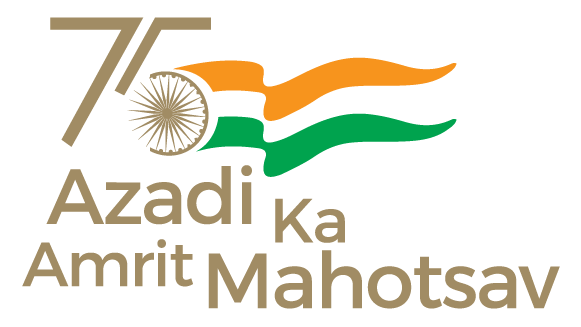
Update on improving Medical Tourism in the country India ranks 10th in Medical Tourism Index (MTI) for 2020-2021 out of 46 destinations of the world Foreign Tourists Arrival on medical purpose increases from 1.83 lakh in 2020 to 3.04 lakh in 2021
India has been ranked 10 th in Medical Tourism Index (MTI) for 2020-2021 out of 46 destinations of the world by Medical Tourism Association. As per information provided by Ministry of Tourism, foreign tourist arriving in India for medical purpose are as below:
With an aim to improve medical tourism in country, Ministry of Tourism has formulated a National Strategy and Roadmap for Medical and Wellness Tourism in 2022. The strategy has identified following key pillars for the development of medical value travel in the country:
- Develop a brand for India as a wellness destination
- Strengthen the ecosystem for medical and wellness tourism
- Enable digitalization by setting up Online Medical Value Travel (MVT) Portal
- Enhancement of accessibility for Medical Value Travel
- Promoting Wellness Tourism
- Governance and Institutional Framework
Union Ministry of Health & Family Welfare is coordinating with other Ministries viz Ministry of Home Affairs, Tourism, AYUSH, External Affairs, Civil Aviation, State Governments and other stakeholders to promote Medical Value Travel (MVT) in the country. An institutional approach in coordination with other Ministries like Ministry of Tourism, AYUSH, Home Affairs, External Affairs, Civil Aviation, State Governments and other relevant stakeholders is adopted for promotion of medical value travel. Several rounds of stakeholder consultations have been conducted with line Ministries, Hospitals, MVT facilitators, Insurance Companies and National Accreditation Board for Hospitals & Healthcare Providers (NABH) to identify the challenges and opportunities in the sector.
The Union Minister of State for Health and Family Welfare, Dr. Bharati Pravin Pawar stated this in a written reply in the Rajya Sabha today.
HFW/ Update on improving medical tourism in the country /2h1 March 2023/4
- Environment
- Road to Net Zero
- Art & Design
- Film & TV
- Music & On-stage
- Pop Culture
- Fashion & Beauty
- Home & Garden
- Things to do
- Combat Sports
- Horse Racing
- Beyond the Headlines
- Trending Middle East
- Business Extra
- Culture Bites
- Year of Elections
- Pocketful of Dirhams
- Books of My Life
- Iraq: 20 Years On
More than 800,000 visit India for medical treatment in three years
Most of the people arriving on medical visas were from african nations.
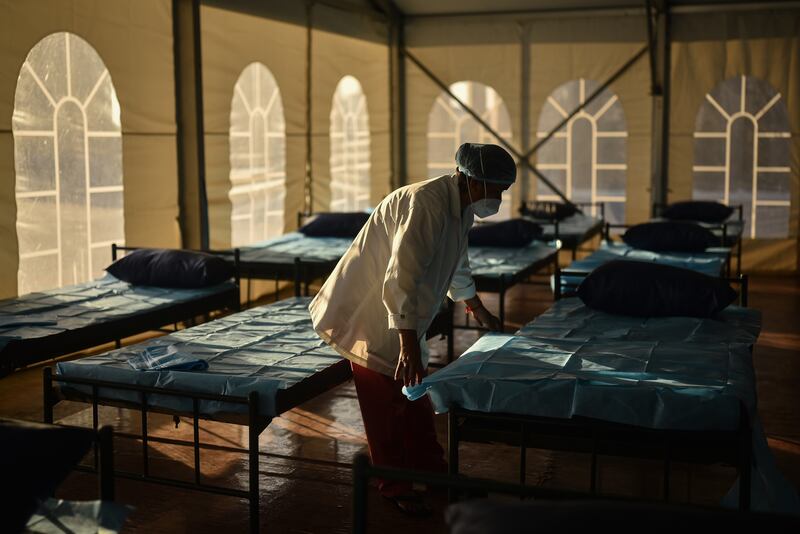
An Indian health worker prepares the medical beds at a makeshift COVID-19 care facility inside the Omandurar Government Medical College Hospital. EPA

More than 800,000 foreigners visited India in the past three years for medical treatment, making it one of the top destinations for medical tourism.
About 825,000 medical visas were issued to foreigners, mostly in African nations, between 2019 and 2021, the Home Ministry said on Tuesday.
“A total of 410,677, 142,928 and 272,190 foreigners arrived on medical visas in 2019, 2020 and 2021 respectively,” said Nityanand Rai, Minister of State for Home.
The numbers are significant, despite international travel restrictions because of the coronavirus.
The global medical tourism market is estimated to be worth about $72 billion. Countries such as Malaysia, Singapore and Thailand are leading destinations for medical tourism.
India’s medical tourism industry was expected to be worth $9bn in 2020, according to industry body the Federation of Indian Chambers of Commerce and Industry.
Last year, the country ranked 10th in the world in the Medical Tourism Index compiled by the Medical Tourism Association.
The country has almost 600 globally and nationally accredited hospitals that provide world-class treatment.
Foreign visitors seek treatment in medical centres such as Delhi and Mumbai, as well as smaller cities where costs are lower.
Afghanistan, Bangladesh, Oman and West Africa are among places from which people journey for treatment ranging from dental care to critical surgery including tumour removal, heart surgery and organ transplants.
Tourists can combine healthcare services with visits to tourist attractions throughout the country.
“I came to India because of its affordable cost and quality treatment and the doctors here are well experienced compared with other countries,” said Abdinur, 65, who visited from Somalia for a heart procedure in southern Hyderabad.
The pandemic slowed the flow of visitors, but the industry is expecting to bounce back.
Mahendrakar Sreekant, head of international operations at Medicover Hospitals in Hyderabad, said there had been a 30 per cent rise in patient footfall since last year.
“We receive nearly 500 patients from countries like Yemen and Africa every year. In fact, the footfall of patients has increased since the pandemic restrictions were lifted, as they were waiting for treatment,” Mr Sreekant told The National .
The Indian government has been pushing to make the country a go-to destination for quality and affordable care.
The country is the world's largest supplier of generic drugs.


Indian Medical Journey
Experience world-class medical care in India

الرحلة الطبية في الهند
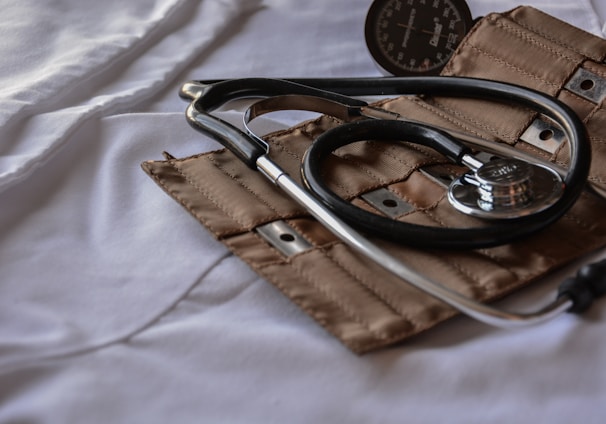
Discover the beauty of India while receiving top-notch medical treatment. Our affordable prices and state-of-the-art facilities make India the perfect destination for medical tourism.
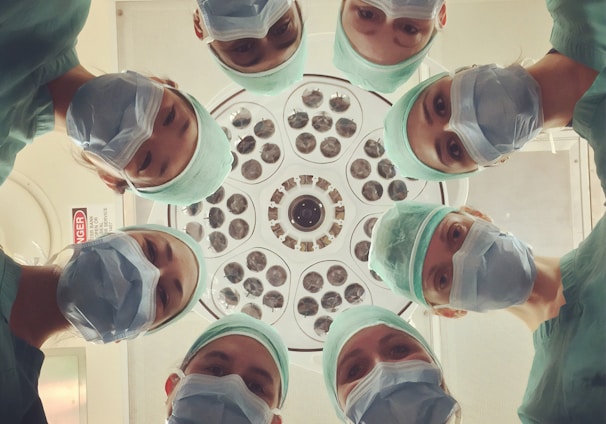
Why Choose Indian Medical Journey?
Discover why India is the preferred destination for medical tourism. With top-notch medical care and facilities at affordable prices, Indian Medical Journey offers world-class treatment combined with the opportunity to explore the rich culture, landscape, and history of India.

Our Services
At Indian Medical Journey, we provide a wide range of services to ensure a seamless and comfortable medical journey. From initial consultation to post-treatment care, our team of experts is dedicated to delivering exceptional healthcare services. Explore our services and experience the best in medical tourism.
About Indian Medical Journey
Indian Medical Journey is your gateway to exceptional medical care in India. We understand the growing demand for high-quality healthcare at affordable prices, and we strive to connect patients from around the world with renowned medical facilities in India. With a focus on providing a seamless medical tourism experience, we ensure that our patients receive the best treatment while exploring the diverse culture and beauty of India.
Experience the Best of Medical Care in Incredible India
Book your medical trip now, don't wait to get the medical treatment you need. book your trip to india today and receive top-notch medical care at an affordable price..
Email: [email protected]
Phone: +918178849424 +919419941499
An official website of the United States government
The .gov means it’s official. Federal government websites often end in .gov or .mil. Before sharing sensitive information, make sure you’re on a federal government site.
The site is secure. The https:// ensures that you are connecting to the official website and that any information you provide is encrypted and transmitted securely.
- Publications
- Account settings
Preview improvements coming to the PMC website in October 2024. Learn More or Try it out now .
- Advanced Search
- Journal List
- Springer Nature - PMC COVID-19 Collection

An Assessment of Competitiveness of Medical Tourism Industry in India: A Case of Delhi NCR
Neha malhotra.
Ambedkar University, Delhi, India
Kartik Dave
Associated data.
The data that support the findings of this study are available from the corresponding author, upon reasonable request.
Code sharing is not applicable to this study as no new code was created or analysed in this study.
India has emerged as a prominent medical tourism hub, yet the dynamic forces in the regional and global landscape are creating a complex balance of opportunities and risks for the Indian stakeholders. The outbreak of Corona virus pandemic in 2019 has further complicated the market dynamics for the medical tourism industry. This study aims to analyse the key driving factors for the medical tourism industry in India and the issues that Indian stakeholders should address in crafting a winning strategy. A qualitative research design was adopted, and data were collected through semi structured in-depth interviews with practitioners and senior representatives of the hospital management. The study adopted abduction logic and analysed data by means of constant comparison method. The study presents the assessment of the medical tourism industry in India and the scope of opportunity for Indian players.
Supplementary Information
The online version contains supplementary material available at 10.1007/s42943-022-00060-0.
Introduction
Catalysed by emerging technologies, varying economic and demographic trends and a new age of healthcare consumerism; the worldwide scenario of healthcare is rapidly evolving. Additionally, a growing ageing population, and a swelling burden of diseases is rising the demand and cost of medical services. This evolution in healthcare is driving cross-country and cross-industry convergence (Deloitte Global, 2021 ), resulting in an upsurge in the worldwide medical tourism market. As this trend towards the healthcare is enduring around the world, more and more countries are extending their health systems to access care, not just for their natives but also gaining strength as leading service providers for international patients. While much of the initial focus was on the developed world, the epicentre is now shifting towards the emerging countries. Governments of these developing countries are working towards prioritising their health systems; enhancing productivity, boosting avenues for innovation and entrepreneurship, generating employment opportunities, increasing foreign exchange earnings, and hence driving GDP growth (Rahman, 2019 ).
India has been having its own unprecedented progress in this sector. To counter the emergent health issues, the health system in India has metamorphosed rapidly since the 90 s and has become the focal point of development. With the presence of clinical and technical expertise, international standards and highly competitive prices; India has emerged as a leading contender in the medical tourism industry (Bagga et al., 2020 ). Yet the accelerating shift in the regional and global landscape is making it challenging for the stakeholders to balance opportunities with risks. The industry is showing ramification of rapid disruption and intensified competition. Service providers are facing new playing fields. Recognizing this change alone isn’t enough. Government and entrepreneurs need to become adept at dealing with disruption and adapt the operating models, in a holistic way, to mitigate the outcomes of the shifting paradigm. It is imperative to introspect and identify the capabilities and resources that stakeholders need to realise. This is critical to endure the sophistication and competence of the medical tourism industry in India.
The outbreak of Corona virus pandemic in 2019 has further complicated the market dynamics for the medical tourism industry. Uncertainty over travel restrictions, changing quarantine measures across the world and the overall unprecedentedness of the situation, have made the entire ecosystem of medical tourism industry more precarious. With cross-border travel restrictions and the need to redirect hospital resources to treat COVID-19 patients, healthcare providers have to manage a dual burden of economic and health crises (Stackpole et al., 2021 ). The challenges posed by this pandemic have further demonstrated how crucial it has become for medical tourism industry in India to review their competitive positioning, access deeper competencies and build resilience.
A review of extant literature indicates very little empirical research has been done to done to examine factors of competitiveness of a medical tourism destination (Abubakar & Ilkan, 2016 ; Heung et al., 2010 ; Thayarnsin & Douglas, 2016 ; Yeoh et al., 2013 ). Theoretical understanding around the phenomena requires further academic attention (Chuang et al., 2014 ), specifically with regards to the perspective of medical tourism providers (Taheri et al., 2021 ). Virani et al. ( 2020 ) have also directed our attention to the neglect of policy-relevant research on medical tourism. This study aims to address this gap. By considering the perspective of medical practitioners and senior representatives of hospital management, this study identifies and analyses the key factors driving success in medical tourism industry and the issues that Indian healthcare providers and policymakers should address in crafting a winning strategy. Taking Delhi NCR as the context, this outlook propounds insightful research into the existing state of medical tourism industry in India, explores the dimensions and factors that can help India shape an effective ecosystem for this sector and suggests considerations for an optimum future of medical tourism industry in India.
Literature Review
The literature review encompasses a succinct discussion on the medical tourism industry, its global trends and the current state of Asian and Indian medical tourism industry, along with the key dimensions of medical tourism as highlighted in the literature.
Medical Tourism
Globalisation is restructuring the industries worldwide. Medical tourism is one such manifestation of globalisation in the healthcare industry (Connell, 2013 ; Ganguli & Ebrahim, 2017 ). Broadly it refers to travelling internationally for healthcare. Since its rapid development in 1990s, medical tourism has received a major reflection from both academia and industry. Though the growing interest to study this industry is well evident, there is still no international consent on the definition or measure of this sector. The existing literature addresses the terms health tourism and medical tourism in a loose and disorganised manner. Terms frequently used, and often synonymously, in this regard are ‘ medical tourism ’, ‘health tourism’, ‘medical travel’, ‘health travel’ and ‘cross-border healthcare’. While some researchers have used “medical travel” and “health travel” synonymously (Gola, 2016 ) others refer to health tourism as a wider field with medical tourism as its subset (Carrera & Bridges, 2006 ; Smith & Puczko, 2009 ). In agreement with Smith and Puczko ( 2009 ), this study represents medical tourism distinctly from other subsets of health tourism. The word ‘medical’ here refers to illness, disorder or injuries. As put forth by Jagyasi ( 2008 ), medical tourism is “the set of activities in which a person travels often long distance or across the border, to avail medical services with direct or indirect engagement in leisure, business or other purposes”. Contrarily, health tourism is a wide-ranging phenomenon where travel can be undertaken for a variety of reasons from preventive and health-conductive treatment to rehabilitation and curative forms of travel (Dunets, et al., 2020 ). Other than medical tourism, health tourism encompasses other related fields like—wellness tourism (involving relaxation and exercises) and sports/adventure tourism (involving outdoor recreation) (Hall, 2011 ). Medical tourism itself has sub branches like ‘reproductive tourism’ and ‘dental tourism’. Another emerging term is “domestic tourism” which refers to the act of travelling within one’s own country for medical purposes (Hudson & Li, 2012 ; Reddy, 2010 ). This study focuses primarily on medical tourism and identifies this practice as travelling internationally to receive medical treatment.
Global Medical Tourism Trends
Lack of specific data, novelty of the concept, and the fragmented and unstructured nature of this industry makes it challenging to review this industry and give an estimate of its size (Chambers & McIntosh, 2008 ; de la Hoz-Correa et al., 2018 ). Prominent market research databases have reported global medical tourism market to be worth USD 104.7 billion in 2019, and have projected it to grow at a CAGR of 12.8%, to reach USD 273.7 billion by 2027 (Chhabra et al., 2021 ; Taheri et al., 2021 ).
Even though there is no fixed estimate of this industry, medical tourism is well-considered amongst the most dynamically growing industries today. Trade economists have documented a strong impact of this phenomenon on the global economy (Bookman & Bookman, 2007 ) especially the emerging countries of the world (Lee & Hung, 2010 ; Pafford, 2009 ). It not only adds to their foreign exchange, but also boosts investments in the medical and tourism sector streamlining their services (Ramirez de Arellano, 2007 ). Asia has been specifically considered as a hub for medical tourism (Connell, 2006 ). Countries like Singapore, India, Thailand, Brunei, Cuba, Hong Kong, Hungary, Israel, Jordan, Lithuania, Malaysia, the Philippines, and the United Arab Emirates have emerged as major providers for healthcare services to international patients (Heung, et al., 2010 ). Several other countries like Mexico, Turkey, Brazil, Costa Rica, Argentina and Bolivia are also working toward establishing themselves as major healthcare destinations (Singh, 2008 ).
The global demand and expenditure for healthcare services is on a rise due to factors such as growing and ageing populations, changing disease patterns and rapid transformations in costly digital technologies. With the rising disparity in healthcare costs, governments, corporations and individuals are looking at outsourcing healthcare facilities to emerging markets (Turner, 2007 ), especially those with advance and cost-effective healthcare facilities, and a proximity to developed countries. Medical tourism is also a viable and economical option for uninsured or underinsured patients. On the other hand, there is a substantial disparity in the quality of healthcare services. Patients from countries with limited government spending on healthcare and under developed private sector are forced to look at options beyond their borders. (KPMG, 2014 ).
Medical Tourism Industry in Asia
Last decade has seen Asia as an emerging leader of the medical tourism industry. This growth is fuelled by the availability of a variety of high quality and cost-effective medical procedures in Asia, improved connectivity and infrastructure and along with the presence of attractive locations to explore. The availability of advanced treatments in fields such as cardiology, neurology, orthopaedic, spine, ophthalmology along with aesthetics and alternative treatments like Ayurveda, Unani, Herbal and Yoga, makes Asia a sought-after destination. With private sector as the primary driver of medical tourism in this region, Asia has seen a faster growth of this industry vis-a-vis any other region globally. Many prominent healthcare providers in Asia are internationally accredited and have positioned themselves as distinguished service providers to patients from both within the region and far beyond. A market research on medical tourism industry anticipates the medical tourism market in Asia to cross USD 14 Billion by 2022 (iGATE Research, 2017 ). The research reports that Thailand, Singapore and India account for maximum proportion of international medical tourists in this region, followed by South Korea and Malaysia. Philippines and Taiwan are amongst other fast emerging markets in this sector. International patients contribute to a one-third or more of revenue in these private hospitals, and hence several private hospitals in this region are targeting this global world medical travellers’ market and have also gained a strong position for themselves in the industry (Mooter, 2017 ). An increased focus from government, foreign investment inflows and emerging startups are fueling up the competition not just between countries, but players as well. With the competition becoming stiffer, these countries and players are becoming more proactive in building their unique identifiers. Price is no longer the only factor of differentiation, countries are now looking at founding their proposition on parameters like diverse offerings, niche market, customized offering and even luxury (KPMG, 2014 ).
Medical Tourism Industry in India
Healthcare is amongst the largest and most complex sectors in India and is poised to touch USD 133.44 billion by 2020 (Outlook India, 2019 ). Healthcare in India is becoming one of biggest industries in terms of revenue generation and employment as well. Giving further impetus to this industry is the medical tourism sector which is bolstering the level of enhancements of care services in India. Table A1, as given in Supplementary Appendix file, states some basic facts related to the medical tourism industry in India. With its key differentiating factors of extremely competitive pricing, highly trained doctors, high quality care and availability of a range of treatments, India has realized the potential of medical tourism and positioned itself as one of the largest service providers in this region (Connell, 2013 ; KPMG, 2014 ; Medhekar et al., 2019 ). A study by KPMG India and Google, has pegged the medical travel industry in India at USD 4.8 Billion in 2017 (KPMG India & Google, 2018 ). The pre-Covid estimations expected the Indian medical tourism market to reach USD 13 billion by 2020 (KPMG India & Google, 2018 ). Despite the deliberative effects of Covid-19 on Travel and hospitality industry, the Indian medical tourism was estimated between USD 5–6 billion in 2021 (Financial Express, 2022 ). A right combination of cost efficiency and quality has driven the growth of this sector in India. Table A2, as given in supplementary appendix file, gives a comparative cost chart, for some common procedures, between India and other major medical tourism destination. Further the presence of a robust private sector, with international accreditations, has reinforced India’s standing. India offers a range of treatments from cardiology, neuro, paediatrics, ortho, ophthalmology, urology, gynaecology, general surgery, dental, cosmetics along with traditional healing options (Qadeer & Reddy, 2013 ). As per a report by Ministry of Tourism, Government of India, around 4,95,000 medical tourists travelled to India in 2017, with Bangladesh, Afghanistan, Iraq, Maldives being the top 5 source countries followed by Oman, Yemen, Uzbekistan, Kenya, Nigeria and Tanzania (Ministry of Tourism, 2018 ). In the following years larger share of travel is expected from Africa and GEC countries (KPMG India & Google, 2018 ).Realizing the opportunity, Government of India has taken a few initiatives to promote and encourage the growth of medical travel to the country. These include Government of India’s health tourism policy; setting up a ‘National Medical & Wellness Tourism Promotion Board’ for regulatory, accreditation and marketing issues; accreditation of hospitals under the National Accreditation Board for Hospitals; dedicated website to promote medical and wellness tourism; promotions at international platforms such as World Travel Mart London, ITB Berlin, ATM, etc.; coverage under Ministry of Tourism's ‘Incredible India Campaign’; introducing separate category of medical visas—‘M Visas’; a proposal for setting up tourism circuits, along with a medical circuit which will connect modern medicine centres and Ayurveda; providing fiscal support and other benefits under Market Development Assistance Scheme (MDA); and lowering import duties on medical technology, equipment and machinery (KPMG, 2014 ; Medhekar et al., 2019 ; Ministry of Tourism, 2018 ).
Key Dimensions of Medical Tourism Industry
This section presents the factors, as highlighted in the literature, that impact the development of medical tourism in a region. Cost and quality are considered amongst the most important dimensions of medical tourism industry (Aziz et al., 2015 ; Bagga et al., 2020 ; Cortez, 2008 ). Affordability and service quality of hospitality and tourism have also been considered as important attributes for a medical tourism destination (Chuang et al., 2014 ; Fetscherin & Stephano, 2016 ; Olya & Nia, 2021 ).
Several studies, e.g. Ghosh and Mandal ( 2019 ) and Fetscherin and Stephano ( 2016 ), have highlighted the importance of the type of treatments offered, medical facilities, practitioner competence, service quality and standards of medical care offered by the service providers (Kamassi et al., 2020 ). Technological upgradation and medical innovation are other important factors linked to the success in this sector (Cortez, 2008 ; Velasco et al., 2013 ). Literature also points towards the importance of trust, credibility, perception and hence the need for certification, international standards and accreditation (Debata et al., 2015 ; Hall, 2011 ; Seow et al., 2017 ).
Beladi et al. ( 2019 ) and Ebrahim and Ganguli ( 2019 ) have explored the role of human resource development and administrative efficiency. Infrastructure and facilities with regards to accommodation, transportation, communication are other important dimensions recognized for medical tourism (Heung & Kucukusta, 2013 ; Kamassi et al., 2020 ).
Country specific factors and attributes such as country knowledge, culture, language, accessibility, safety and security, have also been analysed (Bagga et al., 2020 ; Cham et al., 2021 ; Olya & Nia, 2021 ). Crouch and Ritchie ( 2005 ) in their study have highlighted the importance of socio-cultural and political environment of the destination country. Tourism-specific factors of the destination country, such as weather, attractions, culture and exoticness, have also been considered while studying the attractiveness of a medical tourism destination (Fetscherin & Stephano, 2016 ; Lovelock et al., 2018 ).
Medical tourism destination marketing, destination branding and tourism destination image have also been considered important with respect to the development of medical tourism in any region (Hoz-Correa & Muñoz-Leiva, 2019 ).
Studies have also observed public and private coordination and collaboration of the medical tourism stakeholders, to enhance the development of medical tourism sector (Beladi et al., 2019 ; Ebrahim & Ganguli, 2019 ). Government support and a favourable policy framework have been considered as important factors for this industry (Hall, 2011 ; Wang, 2012 ). Snyder et al. ( 2015 ) and Omay and Cengiz ( 2013 ) have specifically advocated the need for a regulatory framework and policy intervention to improve the efficiency coordination, uniformity and standardisation in this sector and promote the medical tourism industry (Momeni et al., 2018 ).
Methodology
Considering the emerging nature of this industry, qualitative approach was exercised to truly analyse the value proposition of India as a medical tourism destination. A qualitative framework encourages both theoretical and applied knowledge and aids in the development of novel and alternate theories (Bygrave, 1989 ; Creswell, 2013 ). Case study method was adopted to classify and analyse the dimensions that can position India as a prominent healthcare service provider for overseas patients. Merriam ( 2002 ) describes case study as a comprehensive description and examination of a phenomenon or a social unit of study. The case being studied becomes the boundary of the research, and by focussing on a single context this approach seeks to offer an extensive enquiry and meaning of the phenomenon under study (Creswell, 2007 ; Miles & Huberman, 1994 ; Yin, 2011 ). For the present research, context was bounded geographically and the problem at hand was thoroughly explored in the Delhi-NCR region. As also suggested by Stake ( 1995 ), a holistic analysis of medical tourism industry in Delhi NCR allowed for an instrumental way to investigate the phenomenon at a broader level in India.
The Case Study Context: Delhi NCR
This study was conducted in Delhi NCR, i.e. National Capital Region of India. It includes Delhi, officially the NCT, National Capital Territory in India and several other regions neighbouring it; Gurugram, NOIDA and Faridabad being the prominent ones. Delhi NCR has witnessed an unprecedented growth in both, the healthcare infrastructure and as well as services in this last decade. The presence of corporate majors like Fortis, Max, Apollo; high-end hospitals like Medanta, Artemis; day care surgery centres and specialised centres, such as for IVF, eye care, birthing centres; has enabled Delhi NCR to emerge as a healthcare hub (Kachhap, 2012 ). Increased activity from the new corporate players have also spurred the existing older players like BLK, Gangaram and Moolchand to revive and widen their portfolio. These healthcare brands are consistently working towards building a strong medical tourism sector. With its robust medical infrastructure, advanced medical specialities, competitive pricing and highly trained doctors, Delhi NCR is amongst the most prominent healthcare destinations in India for international patients. These hospitals provide valuable services to medical tourists, ranging from special wards and lounges for international patients and their companions, translator services, international cuisines, accommodation services and the like. Moreover, its connectivity, location and rich cultural heritage and presence of international standards of hospitality make Delhi NCR a prime tourist destination. These factors make Delhi NCR an important context for exploring the medical tourism industry in India as a whole.
Data Collection
The qualitative approach and exploratory nature of this study maintains that the researcher becomes an agency for data collection. This enables the researcher to get close to the social phenomenon being studied and enable a deeper understanding of the social reality (Bryman, 1988 ; Marshall & Rossman, 1995 ). This also gives researcher the flexibility to delve into the issues that emerge during the study. The qualitative data for this study was collected by the researchers through semi structured in-depth interviews with senior practitioners, and senior members of hospital management. Conducting interviews allowed the researchers to apprehend wide-ranging perspectives and experiences of respondents with regards to medical tourism.
Potential participants for interviews were identified through purposive sampling, to ensure appropriateness, purpose and rich information. Participants were selected from multi-speciality hospitals, offering healthcare services to medical tourists, and through ongoing referrals from interview participants. Table A3, as given in supplementary appendix file, gives a brief profile of the respondents of this study. As a wide-ranging guideline for qualitative design, the study did not look for an increasing number of cases but aimed to collect an extensive detail from each case under study (Creswell, 2007 ). For this research the number of participant cases to be studied was not predetermined. Instead, taking reference from Maykut and Morehouse ( 1994 ), as the study progressed and data was analysed, additional cases required were determined by the extent to which each additional case would contribute to the understanding of the research problem. Data collection was concluded when it was realised that the emerging issues and themes were getting “saturated” and no new data was being found (Creswell, 2007 ; Glaser & Strauss, 1967 ; Strauss & Corbin, 1990 , 1998 ). For this study data saturation occurred within 20 samples. Having a smaller sample size allowed the research to spend an extensive time with each case and encouraged that the understanding, of Delhi-NCR’s competitiveness as a medical tourism destination, which emerged was representative of the practitioners’ perspective (Shaw, 1999 ).
The interviews were conducted in the respondents’ hospitals. The interviews lasted for about 45 min. These were conducted face to face, were audio recorded, after checking with the participants, and later transcribed verbatim. Vital areas of concern were recognised after a thorough literature review on medical tourism and an appraisal of the dimensions of competitiveness of a medical tourism destination, identified by (Malhotra & Dave, 2022 ). These served as the guide for conducting interviews.
Data Analysis
Data was analysed by means of constant comparison method as outlined by Glaser and Strauss ( 1967 ), Strauss and Corbin ( 1990 , 1998 ) and Creswell ( 2007 ). Accordingly, data collection and data analysis were done simultaneously. This allowed the researcher to make necessary adjustment to the research process, such as, sample selection, and testing the emerging themes or concepts with subsequent data (Merriam, 2002 ). This study has adopted the ‘abduction’ logic for data analysis. An abductive analysis approach emphasizes that instead of keeping all predefined theoretical concepts aside, a researcher should enter the field with a broad theoretical understanding and during the research process develop and build upon their theoretical repertoires (Timmermans & Tavory, 2012 ). As also proposed by Lichy et al. ( 2020 ), since the data set for this study was modest in size, coding was conducted manually.
The theoretical background referred to in this paper is a study, by the same authors, on the dimensions and drivers of medical tourism industry. (Malhotra & Dave, 2022 ) previously developed this paper based on a systematic review of empirical studies on the medical tourism industry globally. The purpose of the study was to identify and analyse the factors and dimensions that influence the competitiveness of a country as a medical tourism destination. Figure 1 outlines the dimensions identified by their study. These are structured around the domains of medical tourism opportunity and a country’s positioning, infrastructure and health human resource competence, care delivery, governance and regulatory framework.

Factors influencing a country’s medical tourism industry.
Source: Malhotra & Dave ( 2022 )
This study uses the extant structure to systemize its findings from research work in Delhi NCR that pursues an understanding on how the value proposition of medical tourism industry can be redefined here. This helps us explore the wider relevance of the proposed dimensions in the study by (Malhotra & Dave, 2022 ) and its implications in a specific context. By analysing the experiences of the practitioners from Delhi NCR, the study has able been able to identify an additional dimension that impact a medical tourism destinations’ competitiveness. This dimension is the role of medical facilitators and it has been included in the existing domain of Refined Delivery. Taken together, this has helped to emerge a more comprehensive range of dimensions that are relevant for the development of an advanced medical tourism destination.
This section organises the fieldwork findings around the dimensions outlined in the (Malhotra & Dave, 2022 ) study to identify any contrast and facilitate discussion on Delhi-NCR’s proposition as a medical tourism destination. These dimensions are: assessing a country’s competence as a medical tourism destination, successful positioning and government as a facilitator. While each of these dimensions have been considered independently, for analytical purpose, the apparent correlation between these three domains should be acknowledged. Along with this the discussion also includes respondents’ views on the opportunity assessment of medical tourism for India, its benefits and social implications.
Assessing Medical Tourism as an Opportunity
The ambiguity in the size or figures of the medical tourism market, as highlighted in the literature review, was also reported in the fieldwork of this study. Participants emphasised the concern regarding lack of data on the volume of value of this industry or the market shares. Almost all respondents saw medical tourism as an opportunity for India. They reflected that the market is increasing on a year-to-year basis and that there is a huge potential for the coming 5 to 10 years as well. The major reasons reported for India’s exponential growth in this segment is its clinical expertise, major cost competitiveness over other countries, conducive and friendly environment.
“Reason for the growth is that India has the advantage of being clinically excellent. Technology if not the best is at par with most other countries, our clinicians are trained abroad and they are returning back to practice in India. So clinical excellence has built up” (Respondent 9) “Indian hospitals are clinically sound, environment is conducive, we have a price point advantage over many other countries, then we speak a language that is understood, or getting people who speak their language is easier and cost effective” (Respondent 11)
Some of the respondents also highlighted the evolution in the medical tourism industry, with destination countries getting matured and looking to invest in their own healthcare infrastructure, new medical tourist hubs coming up and a growing impetus of value driven services.
“Very soon you’ll see, facilities there will be developed, clinicians from here will go and train their people. They will still carry back procedures, which cannot be done there, because of the environment, or which require critical post-op care.” (Respondent 14)
Assessing a Country’s Competence as a Medical Tourist Destination
A well-crafted strategy can lay the foundation for a competitive destination for medical tourism and creating an environment of holistic care for medical tourists. The study shows a consensus on the competence of India and specifically Delhi NCR as a healthcare provider.
Healthcare Infrastructure
In the last decade, Delhi NCR has seen the emergence of a robust private healthcare system. Most respondents agreed that Delhi-NCR’s healthcare infrastructure, if not superior, is at par with most other destinations. And that it is one of prominent drivers of medical tourism industry here.
“In purely technical terms of medical infrastructure, I think we are at par with both Singapore and Thailand, or any other country for that matters, where they have an edge over us?? I think it’s in terms of their overall infrastructure…their ethos of cleanliness for example. It takes us an effort to do that, whereas in a place like Singapore it’s given, so that’s the challenge for us Indians” (Respondent 9)
Refined Delivery
Respondents indicate a lack of streamlined and standardised care delivery. This includes not just healthcare services, but service touch points of travel, tourism, airport and hospitality. While Delhi NCR has an appeal over factors such as accommodation, cultural adaptability, language interpreters and general conduciveness, it still has a long way to go.
“Facilities and infrastructure in hospitals are no less than anywhere else, but I think the degree of professionalism can improve a lot. Our systems and processes are not as smooth as how they should be... like the whole process starts when a patient needs medical care in a certain country, so he gets in touch with a local hospital or agent in the source country who in turn gets in tough with the hospital here, that interface could be smoother.” (Respondent 11) “It’s not about their lack of trust on India’s healthcare system, its generally the perception of India as a country and safety of their travel. Say for e.g., patient addressal mechanism could be stronger.” (Respondent 6)
The ‘role of medical facilitators’ was not highlighted in (Malhotra & Dave, 2022 ) original framework. The research work in this study in the Delhi-NCR region, however, raised a number of critical systems impacts and policy implications regarding the role of medical facilitators or middlemen in the Indian medical tourism market. Participants demonstrated a consistent view regarding the prominent role of the facilitators in the medical value chain, in channelizing the international patients towards a particular country and subsequently a healthcare service provider. There was also a prevalent concern regarding the lack of transparency and regulation in the way these middlemen operate, quality of service delivered, corruption or any unethical practices, and most of all a lack of credibility. Participants expressed an apprehension on the way these facilitators impact the quality of care delivery or the overall experience of overseas patients.
“There are these middlemen, also known as facilitators, they form a very important but also the weakest link in this chain. There is no accountability, no regulation… all this can severely impact the service delivery and in turn our name, our credibility goes down” (Respondent 8)
Quality Driven by Standardized Protocols
Most respondents have recognised the importance of accreditation. Issue of safety and quality is a primary concern for the medical tourists. Delhi-NCR hospitals are accredited with both Indian standard of—National Accreditation Board for Hospitals and Healthcare Providers (NABH) and more importantly Joint Commission International (JCI).
“NABH is a recent Indian government initiative to get some sort of quality standardisation in the healthcare industry, it’s not as stringent as JCI, but at least some initiation has been done.” (Respondent 4) “We had our first international accreditation done in 2006 and now second one around 2011–12. The Indian NABH is comparable, but it’s fairly new and not recognised well in international market. Say JCI is well recognised internationally, so we have to get that done if we want to get recognition in the international healthcare industry. Though sometime one is not able to justify the cost incurred on these international accreditations, but still they are very important.” (Respondent 15)
Enhanced Healthcare Human Resource Development
Though Delhi-NCR’s hospitals are clinically competent, lack of skill at the paramedic level was felt by several; respondents. Most respondents reflected the need for superior training programmes for paramedics, and not just in specialities but also in general category and front staff. Only then will service quality standards be met. Respondents expressed the problem of lack of retention of trained paramedics and healthcare workforce.
“Areas of improvement for us would be paramedics. We don’t have training institutes; we need to have a much more vibrant infrastructure for skilling people. Skill development is not there. One excuse given here is the numbers we deal with makes it impossible to work on trainings…” (Respondent 8) “Doctors travel to enhance their skills, where is the exposure for paramedics? On the job training is never enough to improve their service standards.” (Respondent 2)
Coordination and Collaboration for a Superior Care Delivery
Most respondents highlighted a lack of coordination or participation at an industry level. Though several forums like FICCI, CII and the like have been recognised to have some level of representation, however these collaborations and partnerships are still at an early stage. An important reason highlighted was the clash of opinions between players. The industry is still at a fragmented state, where each hospital is strategizing to increase its share in the pie.
Successful Positioning
Most respondents spoke about the individual efforts and strategies, at the group hospital level. Each corporate is trying to position in the international market, in its own capacity. There are some efforts by the government as well in this regard.
“Yes, these corporate groups and other private players are strategizing for capturing medical tourism market, it is a big agenda for them.” (Respondent 5 )
By far, Delhi NCR has been able to position itself as a clinically competent and a cost-effective player. It also scores over other players in terms of its cultural adaptability and soft service skills. Indian doctors are considered more approachable.
“On the price that we are charging, the service that we are giving is very good. We have a patient from Canada, he tells us that our service quality, the kind of attention we give is far better than what they get in west. Because, here we give personal attention, people talk to you, they are ready to go out of their way to help you…” (Respondent 3)
Government as a Facilitator
There was a mixed opinion regarding the role of government as a facilitator. A majority of the respondents felt that government should stay out of the medical tourism sector and the system. They strongly felt that any kind of intervention or regulation by the government would hamper the growth of this industry in India.
“Thankfully govt doesn’t interfere, else the business would go down. As in case of many other sectors... the fact that govt has stayed away from this business like in case of IT sector, has helped the business to come to a certain level... the moment govt steps in, and starts the process of licencing, permits, accreditation. the whole system will come down… let this run as a free market interaction, cause that will bring the best quality at the lowest price… leave the market to its business...” (Respondent 7)
The other opinion recognises the government’s efforts in a positive state. They feel the government has stepped in whenever it needs to, for visa facilitation, rationalisation of visa costs as the like. Initiatives from government and regulatory bodies are required to make the system cleaner and more transparent.
“Regulation is like a double edge sword, it helps you in certain things, it harms you in certain ways. So as long as the regulations are crafted carefully, taking in to the considerations the infrastructure of the institutions…” (Respondent 15)
Social Implications and Benefits of Medical Tourism
The widely shared outlook demonstrated the positive impact of medical tourism on a country’s healthcare and tourism industry. Participants expressed a consistent vision of an overall upgradation of both healthcare and basic infrastructure in the country as a result of the fast-growing competition in the medical tourism market. The participants typically did not express a concern on the social implication of medical tourism industry on the domestic healthcare industry of India, however suggested a holistic outlook to the entire proposition.
“We should not ague on how encouraging medical tourism in India can have a negative impact in our own healthcare burden... If you see we have come a long way, our healthcare system, our medical expertise, technology, has progressed immensely… competition is good for any industry.” (Respondent 12) “If we talk about the impact of medical tourism on Indian healthcare industry, I should say it’s been a positive one… this proposition has added value, credibility and given us a global visibility. One can see a long-term benefit to the domestic industry, not just healthcare but other sectors as well, tourism, logistics, hospitality… Our overall standards of service and hospitality is increasing.” (Respondent 12)
Research aimed at exploring the sources of competitiveness, in a particular industry, for firms competing in international or regional markets (e.g., Momaya, 2019 ; Moon et al., 2015 ; Thompson et al., 2013 ) have emphasised the role of abilities, proprietary knowledge, innovation capability, sustainable business and economic model, technological innovation, pace of internationalisation, quality, business excellence and human resources. Based on our research and taking these factors into consideration, India’s capability as a medical tourism destination is assessed below and gap areas identified. Table Table1 1 provides a synthesis of the growth drivers for India’s medical tourism industry and the opportunity scope.
Medical tourism industry in India—growth drives and opportunity scope.
Source: Compiled by author
With increasing significance of quality and outcomes of the service (Mishra & Sharma, 2021 ), ‘value’ has become the watchword for the healthcare industry. The term to be used here is then medical ‘value’ travel. The addressable market is huge and several countries are strategizing to tap into this opportunity. India’s needs to build a value proposition around the right combinations of cost and quality efficiency.
Clinical expertise and cost are primarily the two important drivers of medical tourism market in India (Ebrahim & Ganguli, 2019 ). It has an edge over other countries with respect to its cost competitiveness. With several prominent super speciality brand names, Delhi NCR has become a hub for medical tourism. The emergence of a robust private sector has significantly enhanced the quality and standards of healthcare. With the presence of clinical and technical expertise, and international standards, Delhi’s credibility as a medical destination is on a rise. Delhi also scores high on the parameters like cultural adaptability and soft skills. The surge in emerging unconventional formats of healthcare delivery and technological revolutions are further fuelling the growth of this industry in India.
Delhi’s holistic appeal as a medical travel destination is hampered by a significantly poor perception on factors such as safety, travel infrastructure, tourism experience and streamlined systems. There have been few initiatives from the government, however much work needs to be done. Regulatory initiatives are specifically required in the areas of transparent accreditation to prevent false claims and substandard care deliveries. Most of all there needs to be a streamlined effort to bring the industry together and work on common grounds of promotion, streamlined systems and travel infrastructure. The medical facilitators play a prominent role in the medical tourism value chain. However, there is an urgent need to define and regularise their position. The channel needs to be streamlined to promote transparency in the process and curtail any unethical and unfair practice that can impact the service outcome and in turn the overall credibility.
Delhi NCR, being the capital and focal point of major developments in the country, has significant scope for improvements in airport and travel infrastructure. As in case of the hospitality industry, service delivery standards need to get streamlined in healthcare industry as well. This would mean investing in training and retaining of paramedics, not just with specialities, but general nurses and staff well.
Industry to focus on brand building initiatives, driven by digital marketing solutions and user specific marketing campaigns. Industry can leverage from collaborative efforts of the stakeholders and public private partnerships to extend potentials of enhancing expertise, efficiency and investment. Most of all it is critical to focus on factors like safety, pollution, drinking water quality, sanitation and corruption to promote a strong positive image of the country that can positively impact medical tourism industry.
As the market is getting matured, industry dynamics are changing. ‘Value’ and ‘Sustainability’ have become the operative words around the world. India and specifically Delhi NCR can look at streamlining the medical value chain by adding and generating value at each touch point, both for India and the source country. With countries which are ready to step up their healthcare facilities, India can explore the option of ‘reverse medical travel’, where in Indian doctors can help set up facilities in the source countries and train their health resources. The complicated and serious procedures will still have to refered back to India, due to the nature of procedure or the critical post-op are required. Such initiatives have already started taking place, but at a minuscule scale. Indian healthcare system needs to take a giant leap towards leveraging the unconventional operating models and technological revolutions, building an ecosystem that encourages and supports innovation. Tapping the international market in a big way will further power this growth.
Limitations and Avenues for Future Research
Case study research has an inherent limitation of generalisability. This research is limited to redefining the value proposition of the medical tourism industry in the Delhi-NCR region only. However, to get an overall perspective of India as a destination, such a study needs to get extended to other major medical tourism hubs as well, such as Chennai, Hyderabad, Kolkata, Mumbai. Also, this study is limited to the surgical aspect of the medical tourism market. Further research could also focus on another growing segment of wellness tourism. Domestic tourism is also an important but a relatively unexplored area. Other micro-niche areas can be super-specialities such as cardiac, ortho, dental, or reproductive services. Facilitators for an important but a very weak link in the medical travel value chain. Further research could focus to either remove or to strengthen this link.
India’s evolution, as amongst the world’s most preferred medical tourist destinations, is expected to sustain a steady growth. This growth is driven by five major factors: cost competitiveness, medical expertise, quality of healthcare services, robust private sector and cultural adaptability. Even as these factors propel India forward, there are some major gaps to bridge. The most pressing concerns in front of the Indian medical tourism industry are paucity of an amenable policy framework, inadequate tourism and logistic infrastructure, unstandardized service quality standards, and India’s poor perception on macroeconomic factors such as corruption, environment quality, safety. To successfully build a future of envisioned growth, India must place a premium on a collaborative effort from all the stakeholders, to address these issues; a commitment to innovation and sustained inclusive growth.
As for the healthcare systems around the world, COVID-19 pandemic has shaken the foundations of Indian healthcare industry as well. With business and health restrictions, medical tourism industry also suffered the initial setback (Ayittey, 2020 ). Government, tourism companies and healthcare providers are struggling to remodel their business to adjust to current realities, withstand the pandemic and accelerate recovery. As the trajectory of the COVID-19 pandemic is not clear, the future remains uncertain. This pandemic and uncertainty around it have further intensified the need for the industry players to direct their focus on realignment and revaluation of their business models and work towards enhancing resilience and agility.
The purpose of this research is to analyse the factors that are crucial for India to identify, create and finally deliver a distinctive value proposition as medical tourism destination. Following a literature review and a qualitative study with Delhi NCR as a case, this research advances the medical tourism body of knowledge. The paper discusses the research process and the methodology adopted for the study in detail. Finally, the report analyses India’s, and specifically Delhi-NCR’s, competence as a medical tourist destination and synthesises the key growth drivers and opportunities for this industry.
Key Questions Reflecting Applicability in Real Life
- What are the critical success factors in medical tourism industry?
- What are the dimensions and factors that can help India increase its competitiveness as a medical tourism destination?
- How can service providers ensure a steady growth of the medical tourism ecosystem, to ensure sustainability and competitiveness?
- What role can policy support play for the medical tourism ecosystem in India and its competitiveness?
- How has the Covid-19 Pandemic affected the medical tourism ecosystem? Which segment of the industry can rebound stronger in which cities?
Below is the link to the electronic supplementary material.
Acknowledgements
The authors extend their special thanks to all the respondents of this study, who despite their busy schedules and heavy engagements, took time to give us their insights and critical inputs to improve the quality of this research. Besides, the authors wish to acknowledge all the reviewers including the members on the Editorial Board of this journal, whose constructive critique helped in improving the quality of the paper to a great extent.
Biographies
has over 16 years of diverse experience in industry and academics. She has been working as a management consultant offering knowledge-based services to clients in the consumer and retail sector. Neha has also been associated with various universities and institutes as a visiting faculty in the area of marketing, management and retail. Her research interest lies in the area of Marketing, Retail, Luxury, Services, Consumer Behaviour, Education and Employability. Neha Malhotra is a doctoral scholar at Ambedkar University, Delhi. She has done MS in Consultancy Management from BITS Pilani and Postgraduation in Fashion Management Studies from NIFT Bangalore.

is a professor of Marketing and Retail Management area at Ambedkar University, Delhi. He brings in-rich experience of around 23 years in industry and academics. Prof Dave is also Dean of School of Business, Public Policy and Social Entrepreneurship (SBPPSE) at Ambedkar University. He has been serving as an expert for various academic endeavours like selection committees, board of studies, PhD examiner, speaker and trainer at various B-schools and universities. His research interest lies in Marketing, Management, Services, Branding, Luxury, Retailing, Customer Analysis, Internationalization in Higher Education, Management Education in India, Quality and Accreditation issues.

Author Contributions
All authors contributed to the study conception and design. Material preparation, data collection and analysis were performed by NM and KD. The first draft of the manuscript was written by NM and all authors read and approved the final manuscript.
The authors declare that there was no funding from any agency or institution for conducting this study.
Data Availability
Code availability, declarations.
On behalf of all authors, the corresponding author states that there is no conflict of interest. The authors have no relevant financial or non-financial interests to disclose.
Publisher's Note
Springer Nature remains neutral with regard to jurisdictional claims in published maps and institutional affiliations.
Contributor Information
Neha Malhotra, Email: [email protected] .
Kartik Dave, Email: ni.ca.dua@kitrak .
- Abubakar AM, Ilkan M. Impact of online WOM on destination trust and intention to travel: A medical tourism perspective. Journal of Destination Marketing & Management. 2016; 5 (3):192–201. doi: 10.1016/j.jdmm.2015.12.005. [ CrossRef ] [ Google Scholar ]
- Ayittey FK, Ayittey MK, Chiwero NB, Kamasah JS, Dzuvor C. Economic impacts of Wuhan 2019-nCoV on China and the world. Journal of Medical VIrology. 2020; 92 (5):473. doi: 10.1002/jmv.25706. [ PMC free article ] [ PubMed ] [ CrossRef ] [ Google Scholar ]
- Aziz A, Yusof RM, Ayob M, Bakar NTA. Measuring tourist behavioural intention through quality in Malaysian medical tourism industry. Procedia Economics and Finance. 2015; 31 :280–285. doi: 10.1016/S2212-5671(15)01179-X. [ CrossRef ] [ Google Scholar ]
- Bagga T, Vishnoi SK, Jain S, Sharma R. Medical tourism: Treatment, therapy and tourism. International Journal of Scientific and Technology Research. 2020; 9 (3):4447–4453. [ Google Scholar ]
- Beladi H, Chao CC, Ee MS, Hollas D. Does medical tourism promote economic growth? A cross-country analysis. Journal of Travel Research. 2019; 58 (1):121–135. doi: 10.1177/0047287517735909. [ CrossRef ] [ Google Scholar ]
- Bookman M, Bookman K. Medical tourism in developing countries. Palgrave Macmillan; 2007. [ Google Scholar ]
- Bryman A. Doing Research in Organisations. Routledge; 1988. [ Google Scholar ]
- Bygrave W. The entrepreneurship paradigm (I): A philosophical look at its research methodologies. Entrepreneurship Theory and Practice. 1989; 14 (1):7–26. doi: 10.1177/104225878901400102. [ CrossRef ] [ Google Scholar ]
- Carrera P, Bridges J. Globalization and healthcare: Understanding health and medical tourism. Expert Review of Pharmacoeconomics and Outcomes Research. 2006 doi: 10.1586/14737167.6.4.447. [ PubMed ] [ CrossRef ] [ Google Scholar ]
- Cham TH, Lim YM, Sia BC, Cheah JH, Ting H. Medical tourism destination image and its relationship with the intention to revisit: A study of Chinese medical tourists in Malaysia. Journal of China Tourism Research. 2021; 17 (2):163–191. doi: 10.1080/19388160.2020.1734514. [ CrossRef ] [ Google Scholar ]
- Chambers D, McIntosh B. Using authenticity to achieve competitive advantage in medical tourism in the English-speaking Caribbean. Third World Quarterly. 2008; 29 :919–937. doi: 10.1080/01436590802106056. [ CrossRef ] [ Google Scholar ]
- Chhabra A, Munjal M, Mishra PC, Singh K, Das D, Kuhar N, Vats M. Medical tourism in the Covid-19 era: Opportunities, challenges and the way ahead. Worldwide Hospitality and Tourism Themes. 2021 doi: 10.1108/WHATT-05-2021-0078. [ CrossRef ] [ Google Scholar ]
- Chuang TC, Liu JS, Lu LY, Lee Y. The main paths of medical tourism: From transplantation to beautification. Tourism Management. 2014; 45 :49–58. doi: 10.1016/j.tourman.2014.03.016. [ CrossRef ] [ Google Scholar ]
- Connell J. Medical tourism: Sea, sun, sand and… surgery. Tourism Management. 2006; 27 (6):1093–1100. doi: 10.1016/j.tourman.2005.11.005. [ CrossRef ] [ Google Scholar ]
- Connell J. Contemporary medical tourism: Conceptualisation, culture and commodification. Tourism Management. 2013; 34 :1–13. doi: 10.1016/j.tourman.2012.05.009. [ CrossRef ] [ Google Scholar ]
- Cortez N. Patients without borders: The emerging global market for patients and the evolution of modern health care. Indiana Law Journal. 2008; 83 :1–24. [ Google Scholar ]
- Creswell JW. Qualitative inquiry and research design: Choosing among five approaches. 2. Sage Publications Inc.; 2007. [ Google Scholar ]
- Creswell J. Qualitative Inquiry & Research Design Choosing among Five Approaches. CA Sage: Thousand Oaks; 2013. [ Google Scholar ]
- Crouch GI, Ritchie JB. Application of the analytic hierarchy process to tourism choice and decision making: A review and illustration applied to destination competitiveness. Tourism Analysis. 2005; 10 (1):17–25. doi: 10.3727/1083542054547930. [ CrossRef ] [ Google Scholar ]
- De La Hoz-Correa A, Muñoz-Leiva F. The role of information sources and image on the intention to visit a medical tourism destination: A cross-cultural analysis. Journal of Travel & Tourism Marketing. 2019; 36 (2):204–219. doi: 10.1080/10548408.2018.1507865. [ CrossRef ] [ Google Scholar ]
- De la Hoz-Correa A, Muñoz-Leiva F, Bakucz M. Past themes and future trends in medical tourism research: A co-word analysis. Tourism Management. 2018; 65 :200–211. doi: 10.1016/j.tourman.2017.10.001. [ CrossRef ] [ Google Scholar ]
- Debata BR, Patnaik B, Mahapatra SS, Sree K. Interrelations of service quality and service loyalty dimensions in medical tourism: A structural equation modelling approach. Benchmarking: an International Journal. 2015; 22 (1):18–55. doi: 10.1108/BIJ-04-2013-0036. [ CrossRef ] [ Google Scholar ]
- Deloitte Global. (2021). Digital transformation and health care delivery model convergence. Retrieved from https://www2.deloitte.com/content/dam/Deloitte/global/Documents/Life-Sciences-Health-Care/gx-digital-transformation.pdf
- Dunets AN, Yankovskaya V, Plisova AB, Mikhailova MV, Vakhrushev IB, Aleshko RA. Health tourism in low mountains: A case study. Entrepreneurship and Sustainability Issues. 2020; 7 (3):2213. doi: 10.9770/jesi.2020.7.3(50). [ CrossRef ] [ Google Scholar ]
- Ebrahim AH, Ganguli S. A comparative analysis of medical tourism competitiveness of India, Thailand and Singapore. Tourism: an International Interdisciplinary Journal. 2019; 67 (2):102–115. [ Google Scholar ]
- Fetscherin M, Stephano RM. The medical tourism index: Scale development and validation. Tourism Management. 2016; 52 :539–556. doi: 10.1016/j.tourman.2015.08.010. [ CrossRef ] [ Google Scholar ]
- Financial Express. (2022, March). Medical value tourism in India: What makes the country a leading Medical Tourism Destination. Financial Express.
- Ganguli S, Ebrahim A. A qualitative analysis of Singapore's medical tourism competitiveness. Tourism Management Perspectives. 2017 doi: 10.1016/j.tmp.2016.12.002. [ CrossRef ] [ Google Scholar ]
- Ghosh T, Mandal S. Medical tourism experience: Conceptualization, scale development, and validation. Journal of Travel Research. 2019; 58 (8):1288–1301. doi: 10.1177/0047287518813469. [ CrossRef ] [ Google Scholar ]
- Glaser B, Strauss A. The Discovery of Grounded Theory Strategies for Qualitative Research. CA Sociology Press; 1967. [ Google Scholar ]
- Gola S. Medical tourism in India – in whose interest? Journal of International Trade Law and Policy. 2016; 15 (2/3):115–133. doi: 10.1108/JITLP-01-2016-0005. [ CrossRef ] [ Google Scholar ]
- Hall CM. Health and medical tourism: A kill or cure for global public health? Tourism Review. 2011; 66 (1/2):4–15. doi: 10.1108/16605371111127198. [ CrossRef ] [ Google Scholar ]
- Heung VC, Kucukusta D. Wellness tourism in China: Resources, development and marketing. International Journal of Tourism Research. 2013; 15 (4):346–359. doi: 10.1002/jtr.1880. [ CrossRef ] [ Google Scholar ]
- Heung V, Kucukusta D, Song H. A conceptual model of medical tourism: implications for future research. Journal of Travel and Tourism Marketing. 2010; 27 (3):236–251. doi: 10.1080/10548401003744677. [ CrossRef ] [ Google Scholar ]
- Hudson S, Li Z. Domestic Medical Tourism: A Neglected Dimension of Medical Tourism Research. Journal of Hospitality Marketing & Management. 2012; 21 (3):227–246. doi: 10.1080/19368623.2011.615018. [ CrossRef ] [ Google Scholar ]
- iGATE Research. (2017). Asia Medical Tourism Market and Forecast To 2022.
- Jagyasi P. Defining medical tourism - Another approach. Medical Tourism Magazine. 2008; 6 :9–11. [ Google Scholar ]
- Kachhap, M. (2012). Developing Delhi - Express Healthcare. Retrieved from www.expresshealthcare.in : https://www.expresshealthcare.in/archive/developing-delhi/563/
- Kamassi A, Abd Manaf NH, Omar A. The identity and role of stakeholders in the medical tourism industry: State of the art. Tourism Review. 2020 doi: 10.1108/TR-01-2019-0031. [ CrossRef ] [ Google Scholar ]
- KPMG. (2014). Medical value travel in India. FICCI Heal Conference. KPMG India.
- KPMG India, & Google. (2018). Indian brands going global, A USD39 billion opportunity.
- Lee C, Hung W. Tourism, health and income in Singapore. International Journal of Tourism Research. 2010; 12 (4):355–359. doi: 10.1002/jtr.755. [ CrossRef ] [ Google Scholar ]
- Lichy J, Farquhar JD, Kachour M. Entrepreneurship via social networks–“connected woman” in Lebanon. Qualitative Market Research: An International Journal. 2020 doi: 10.1108/QMR-01-2020-0004. [ CrossRef ] [ Google Scholar ]
- Lovelock B, Lovelock K, Lyons K. The impact of outbound medical (dental) tourism on the generating region: New Zealand dental professionals' perspectives. Tourism Management. 2018; 67 :399–410. doi: 10.1016/j.tourman.2018.02.001. [ CrossRef ] [ Google Scholar ]
- Malhotra N. & Dave K. (2022). Dimensions and Drivers of Medical Tourism Industry: A Systematic Review of Qualitative Evidence. International Journal of Business and Globalisation . 10.1504/IJBG.2022.10042738 (in press).
- Marshall C, Rossman G. Designing Qualitative Research. 2. Sage; 1995. [ Google Scholar ]
- Maykut P, Morehouse R. Beginning Qualitative Research: A Philosophical and Practical Guide. The free press; 1994. [ Google Scholar ]
- Medhekar A, Wong HY, Hall JE. Factors influencing inbound medical travel to India. Journal of Health Organization and Management. 2019 doi: 10.1108/JHOM-08-2018-0234. [ PubMed ] [ CrossRef ] [ Google Scholar ]
- Merriam SB. Introduction to qualitative research. In: Merriam SB, editor. Qualitative research in practice: Examples for discussion and analysis. San Francisco: Jossey-Bass; 2002. pp. 1–33. [ Google Scholar ]
- Miles MB, Huberman AM. Qualitative data analysis. 2. Sage Publications; 1994. [ Google Scholar ]
- Ministry of Tourism. (2018). India Tourism Statistics 2018. Ministry of Tourism, Government of India.
- Mishra V, Sharma MG. Framework for promotion of medical tourism: A case of India. International Journal of Global Business and Competitiveness. 2021; 16 (1):103–111. doi: 10.1007/s42943-021-00027-7. [ CrossRef ] [ Google Scholar ]
- Momaya KS. The past and the future of competitiveness research: A review in an emerging context of innovation and EMNEs. International Journal of Global Business and Competitiveness. 2019; 14 (1):1–10. doi: 10.1007/s42943-019-00002-3. [ CrossRef ] [ Google Scholar ]
- Momeni K, Janati A, Imani A, Khodayari-Zarnaq R. Barriers to the development of medical tourism in East Azerbaijan province, Iran: A qualitative study. Tourism Management. 2018; 69 :307–316. doi: 10.1016/j.tourman.2018.05.007. [ CrossRef ] [ Google Scholar ]
- Moon HC, Lee YW, Yin W. A new approach to analysing the growth strategy of business groups in developing countries: The case study of India's Tata Group. International Journal of Global Business and Competitiveness. 2015; 10 (1):1–15. [ Google Scholar ]
- Mooter, B. V. (2017, Nov). Medical Tourism in Asia-Pacific Growing Rapidly. BRINK, The Edge of Risk.
- Olya H, Nia TH. The medical tourism index and behavioral responses of medical travelers: A mixed-method study. Journal of Travel Research. 2021; 60 (4):779–798. doi: 10.1177/0047287520915278. [ CrossRef ] [ Google Scholar ]
- Omay EGG, Cengiz E. Health tourism in Turkey: Opportunities and threats. Mediterranean Journal of Social Sciences. 2013; 4 (10):424–424. doi: 10.5901/mjss.2013.v4n10p424. [ CrossRef ] [ Google Scholar ]
- Outlook India. (2019, July). Heath is Priceless Live Healthy. Outlook.
- Pafford B. The third wave–Medical tourism in the 21st century. Southern Medical Journal. 2009; 102 (8):810–813. doi: 10.1097/smj.0b013e3181aa8ce4. [ PubMed ] [ CrossRef ] [ Google Scholar ]
- Qadeer I, Reddy S. Medical tourism in india: Perceptions of physicians in tertiary care hospitals. Philosophy, Ethics, and Humanities in Medicine. 2013 doi: 10.1186/1747-5341-8-20. [ PMC free article ] [ PubMed ] [ CrossRef ] [ Google Scholar ]
- Rahman R. The privatisation of healthcare system in Bangladesh. International Journal of Health Care Quality Assurance. 2019 doi: 10.1108/IJHCQA-11-2017-0217. [ PubMed ] [ CrossRef ] [ Google Scholar ]
- Ramirez de Arellano A. Patients without borders: The emergence of medical tourism. International Journal of Health Services. 2007; 37 (1):193–198. doi: 10.2190/4857-468G-2325-47UU. [ PubMed ] [ CrossRef ] [ Google Scholar ]
- Reddy GR. Travel for treatment: Students' perspective on medical tourism. International Journal of Tourism Research. 2010; 12 :510–522. doi: 10.1002/jtr.769. [ CrossRef ] [ Google Scholar ]
- Seow AN, Choong YO, Moorthy K, Chan LM. Intention to visit Malaysia for medical tourism using the antecedents of Theory of Planned Behaviour: A predictive model. International Journal of Tourism Research. 2017; 19 (3):383–393. doi: 10.1002/jtr.2120. [ CrossRef ] [ Google Scholar ]
- Shaw E. A guide to the qualitative research process. Qualitative Market Research: An International Journal. 1999; 2 (2):59–70. doi: 10.1108/13522759910269973. [ CrossRef ] [ Google Scholar ]
- Singh PK. Medical tourism. Kanishka Publishers; 2008. [ Google Scholar ]
- Smith M, Puczko L. Health and wellness tourism. Elsevier; 2009. [ Google Scholar ]
- Stackpole I, Ziemba E, Johnson T. Looking around the corner: COVID-19 shocks and market dynamics in US medical tourism. The International Journal of Health Planning and Management. 2021; 36 (5):1407–1416. doi: 10.1002/hpm.3259. [ PMC free article ] [ PubMed ] [ CrossRef ] [ Google Scholar ]
- Stake RE. The art of case study research. Sage Publications; 1995. [ Google Scholar ]
- Strauss A, Corbin JM. Basics of qualitative research: Grounded theory procedures and techniques. Sage Publications Inc; 1990. [ Google Scholar ]
- Strauss A, Corbin JM. Basics of Qualitative Research: Techniques and Procedures for Developing Grounded Theory. Sage Publications Inc; 1998. [ Google Scholar ]
- Snyder J, Byambaa T, Johnston R, Crooks VA, Janes C, Ewan M. Outbound medical tourism from Mongolia: A qualitative examination of proposed domestic health system and policy responses to this trend. BMC Health Services Research. 2015; 15 (1):1–8. doi: 10.1186/s12913-015-0849-5. [ PMC free article ] [ PubMed ] [ CrossRef ] [ Google Scholar ]
- Taheri B, Chalmers D, Wilson J, Arshed N. Would you really recommend it? Antecedents of word-of-mouth in medical tourism. Tourism Management. 2021; 83 :104209. doi: 10.1016/j.tourman.2020.104209. [ CrossRef ] [ Google Scholar ]
- Thayarnsin, S. L., & Douglas, A. C. (2016). A Systematic Review of Challenges in Medical Tourism Destination Management . Travel and tourism research association: Advancing tourism research globally
- Thompson A, Peteraf M, Gamble J, Strickland AJ, III, Jain AK. Crafting & executing strategy 19/e: The quest for competitive advantage: Concepts and cases. McGraw-Hill Education; 2013. [ Google Scholar ]
- Timmermans S, Tavory I. Theory construction in qualitative research: from grounded theory to abductive analysis. Sociological Theory. 2012; 30 (3):167–186. doi: 10.1177/0735275112457914. [ CrossRef ] [ Google Scholar ]
- Turner L. First world health care at third world prices’: Globalization, bioethics and medical tourism. BioSocieties. 2007; 2007 :303–325. doi: 10.1017/S1745855207005765. [ CrossRef ] [ Google Scholar ]
- Velasco RP, Myint CY, Khampang R, Tantivess S, Teerawattananon Y. Advanced health biotechnologies in Thailand: Redefining policy directions. Journal of Translational Medicine. 2013; 11 (1):1. doi: 10.1186/1479-5876-11-1. [ PMC free article ] [ PubMed ] [ CrossRef ] [ Google Scholar ]
- Virani A, Wellstead AM, Howlett M. Where is the policy? A bibliometric analysis of the state of policy research on medical tourism. Global Health Research and Policy. 2020; 5 (1):1–16. doi: 10.1186/s41256-020-00147-2. [ PMC free article ] [ PubMed ] [ CrossRef ] [ Google Scholar ]
- Wang HY. Value as a medical tourism driver. Managing Service Quality: An International Journal. 2012; 22 (5):465–491. doi: 10.1108/09604521211281387. [ CrossRef ] [ Google Scholar ]
- Yeoh E, Othman K, Ahmad H. Understanding medical tourists: Word-of-mouth and viral marketing as potent marketing tools. Tourism Management. 2013; 34 :196–201. doi: 10.1016/j.tourman.2012.04.010. [ CrossRef ] [ Google Scholar ]
- Yin RK. Applications of Case Study Research. Sage; 2011. [ Google Scholar ]
Select language:

More results...
Affordable and Best Medical Treatments & Surgeries in India
with unmatched personal care
Experience personalized care at every stage of your journey, ensuring tailored treatment and support for your unique needs and preferences.
Enquire with Confidence
Popular Medical Procedures
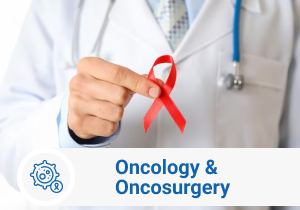
India’s Top Specialized Medical Professionals and Hospitals

Top Doctors
Top Hospitals

Neuro and Brain

Weight Loss

Gastroenterology

Featured Hospitals
Explore the leading hospitals providing exceptional care and innovative treatment for all your medical needs.

A Journey of Healing: Inspiring Testimonials from Our Patients
Success stories of patients from across the world.
I would like to express my gratitude to the Medsurge India team for their assistance in treating my father’s Parkinson’s disease. Without their assistance, it would have been difficult for us to complete the process in India. Nasher Khan, Bangladesh
Before Bone Marrow Transplant Alex suffered from stroke twice which affected his speech & hand movements, now after undergoing BMT he is conversing well, moving hands with ZERO CRISIS, just like any other normal child. Mrs. Ruth, Nigeria
Thanks, Medsurge India for their support and help. I flew back to Cameroon happy and healthy after spending a good time in India. Nelson Atoneh Shu, Cameroon
I got the best service best surgeon the best hospital staff and was looked after with great care and consideration so enjoy your homework and your costings compared to Australia and get on an airplane and come over here and get your work done without having to wait months and months. Mr. Warwick Gill, Australia
I have received good care and treatment in India with the support of Medsurge India team. My treatment cost was very low as compared to the cost in UK. Even my doctors in the UK are happy with the whole treatment plan and outcomes. My best wishes to the whole team!! Mr. Adam Gray, UK
I have to say, I was delighted with my experience dealing with Medsurge India Team. Your quick and efficient responses for my son who had sickle cell anemia disease make you stand out as the epitome of excellent patient service. Mr. Kwanza Neto, Angola
Before Bone Marrow Transplant Alex suffered from stroke twice which affected his speech & hand movements, now after undergoing BMT he is conversing well, moving hands with ZERO CRISIS, just like any other normal child.
Mrs. Ruth, Nigeria
I would like to express my gratitude to the Medsurge India team for their assistance in treating my father’s Parkinson’s disease. Without their assistance, it would have been difficult for us to complete the process in India.
Nasher Khan, Bangladesh
I got the best service, the best surgeon, the best hospital staff, and was looked after with great care and consideration, so enjoy your homework and your costings compared to Australia and get on an airplane and come over here and get your work done without having to wait months and months. Mr. Warwick Gill , Australia
I have received good care and treatment in India with the support of Medsurge India team. My treatment cost was very low as compared to the cost in the UK. Even my doctors in the UK are happy with the whole treatment plan and outcomes. My best wishes to the whole team!!
Mr. Adam Gray , UK
I have to say, I was delighted with my experience dealing with Medsurge India Team. Your quick and efficient responses for my son, who had sickle cell anemia disease, make you stand out as the epitome of excellent patient service.
Mr. Kwanza Neto , Angola
Latest Blog
Our upcoming Events
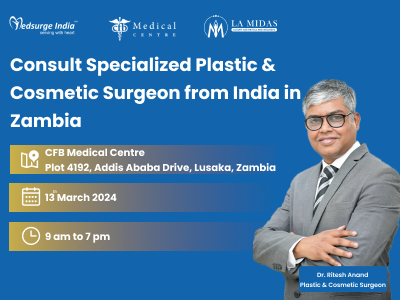
Internationally acclaimed Dr. Ritesh Anand , a specialist in cosmetic and plastic surgery from La Midas Hospital , India, are visiting CFB Medical Centre, Lusaka, Zambia for a Medical Consultation Camp organized by Medsurge India.

Renowned Dr. Aswati Nair , an esteemed IVF & Infertility Specialist from Nova IVF Centre, India will be visiting Uganda to offer expert consultations, organized by Medsurge India.
See us at News & Events
Frequently Asked Questions for MedSurge India
Q1: what does medsurge india do.
A1: Medsurge India provides Holistic Medical Healthcare Assistance and Travel Services to health-seeking individual and their families according to their personal requirements and budget.
Q2: Is Medsurge India a Hospital?
A2: Medurge India is not a hospital. Medurge India functions as an organization that caters to patients globally by providing personalized treatment options that can align with their specific needs, rather than operating as a conventional hospital.
Q3: How does Medsurge India find the best hospital and doctors for me?
A3 : Medsurge India has established partnerships with over more than 400 hospitals, clinics, wellness centers, and medical experts across the world who cover all aspects of healthcare, including modern, holistic, and alternative treatments in all major cities of India and in various other countries. Our team is well-versed in the specialties and treatments offered by every doctor and hospital. And by leveraging the report you provide us and by considering the individual circumstances, we strive to identify the optimal physician and treatment approach to meet your unique requirements.
Q4: Does Medsurge India provides medical visas?
A4: Medsurge India does not offer Medical Visas to patients. However, we can assist patients in obtaining an E-medical visa letter for their treatment in India or any other preferred country.
Q5: Do I have to pay any fees for using Medsurge India service?
A5: No, you don’t need to pay any fees for using Medsurge India service. As we assist patients in managing their healthcare expenses by negotiating with hospitals to obtain lower costs.
See How its Work

Subscribe to Our Newsletter!
Stay informed about our most recent blog posts, treatments, and pricing estimates by subscribing to our newsletter today. Be the first to receive updates!

Start your Journey to Good Health With Medsurge India
Trusted by Patients from Across the World

10,000+ Patients Assisted

From 50+ Countries

400+ Top Hospitals and Clinics

1500+ Specialized Doctors

Top Doctors By Speciality
Top 10 Cardiologists in India Top 10 Neurologist in India Top 10 Neurosurgeons in India Top 10 Spine Surgeons in India Top 10 Gynecologists in India Top 10 Oncologists in India Top 10 Bone Marrow Transplant Doctors in India Top 10 Hematologists in India Top 10 Gastroenterologists in India Top 10 Urologists in India Top 10 Liver Transplant Doctors in India Top 10 Orthopedics Surgeons in India Top 10 Cosmetic and Plastic Surgeons in India
Top Treatments
Bone Marrow Transplant Cost in India Dendritic Cell Therapy Cost in India Kidney Transplant Cost in India Hip Replacement Surgery Cost in India Liver Transplant Cost in India Cancer Treatment Cost in India Lung Cancer Treatment Cost in India Breast Cancer Treatment Cost in India Sickle Cell Anemia Treatment Cost in India Brain Tumor Surgery Cost in India Neurosurgery Cost in India Heart Bypass Surgery Cost in India Heart Transplant Cost in India Orthopedic Treatment Cost in India Multiple Myeloma Treatment Cost in India Plastic and Cosmetic Surgery Cost in Turkey Rhinoplasty Surgery Cost in Turkey Nuclear Medicine Therapy Cost in India
Top Hospitals in India
Max Hospital Saket Fortis Hospital Gurgaon Global Hospital Chennai MGM Healthcare, Chennai Fortis Hospital Kolkata Apollo Hospital Delhi Medanta Hospital Gurgaon KIMS Hospital, Hyderabad Yashoda Hospitals, Hyderabad Seven Hills Hospital, Mumbai Jaslok Hospital Mumbai Artemis Hospital Gurgaon Apollo Spectra Hospital, Chennai Fortis Hospital, Bangalore Kokilaben Dhirubhai Ambani Hospital, Mumbai Rajagiri Hospital, Kochi MIOT International Hospital, Chennai Manipal Hospitals Dwarka, Delhi
Best Hospitals For Treatments
Best Blood Cancer Hospital in India Best Breast Cancer Hospital in India Best Heart Hospital in India Best Orthopedic Hospital in India Best Kidney Transplant Hospital in India Best Neurology Hospital in India Best Lung Transplant Hospitals in India Best Bone Marrow Transplant Hospitals in India Best Hip Replacement Hospitals in India Best Knee Replacement Hospitals in India Best Cancer Hospitals in India Best Nuclear Medicine Hospitals in India Best Lung Cancer Hospitals in India Best Urologist Hospitals in India Best Bone Cancer Treatment Hospitals in India Best Spine Surgery Hospitals in India
By using our site, you agree to our Terms and Conditions , Privacy Policy and Refund Policy . Medsurgeindia does not provide medical advice, diagnosis, or treatment. The information provided on this site is designed to support, not replace, the relationship that exists between a patient/site visitor and his/her existing physician. We also Accept International Payments.

© Copyright 2023 NSM ONLINE SOLUTIONS PRIVATE LIMITED. All rights reserved.
Start live Chat Now
Subscribe Now! Get features like

- Latest News
- Entertainment
- Real Estate
- SRH vs RCB Live Score
- Crick-it: Catch The Game
- Lok Sabha Election 2024
- Election Schedule 2024
- IPL 2024 Schedule
- IPL Points Table
- IPL Purple Cap
- IPL Orange Cap
- AP Board Results 2024
- The Interview
- Web Stories
- Virat Kohli
- Mumbai News
- Bengaluru News
- Daily Digest

Moscow extends a warm welcome to Indian travellers with enhanced infrastructure and hidden gems
Russia actively promoting moscow as a tourist destination for indian travellers, improving infrastructure and visa process..
Russia is making an active bid to attract Indian travellers to visit Moscow -- a huge megalopolis and the historical, political and spiritual heart of the Russian Federation. The Moscow City Tourism Committee is promoting the city not only as a cultural capital but also as a business hub as it plans to onboard trade partners, tourists and vacationers. Moscow has also strengthened cooperation with the tourism sectors of allied nations, hosting familiarization tours for delegates and arranging business trips to showcase the city's tourism potential.

To accommodate visitors, Moscow is improving its infrastructure: signs are now available in English and Chinese, all announcements on public transport are repeated in English, and hotels are also adapting to cater to the needs of guests from various countries and ensure a comfortable stay. "We are still on our way to restore the flow of Indian tourists in Moscow like it used to be before the pandemic," said Bulat Nurmukhanov, Head of International Cooperation Division of Moscow City Tourism Committee.
Bulat further said that before the pandemic, there was a steady growth of 12-15 per cent on a year-on-year basis. In the first half of the year, Moscow received about 20,000 Indians, compared to the same period a year ago, it is about 56 per cent higher. In a bid to make Moscow a must-visit destination, the committee is actively working on improving the infrastructure for international travellers. Moscow is spearheading the development of innovative standards in catering to the needs of foreign travellers.
Tourists arriving in the capital can stay in hotels of various price segments. They can savour traditional Russian cuisine, and can also indulge in a diverse culinary experience, with options ranging from authentic Indian delicacies to continental dishes prepared to the highest standards. In 2022, the number of foreign tourists who visited Moscow increased by 6.3 per cent compared to 2021, reaching a total of 1.7 million.
Travelling to Moscow has now become easier as tourists from India and 54 other countries can apply for an electronic visa to enter Russia from August 1, 2023. The impact of e-visa rollout would be available by October this year after the quarterly data from the Russian border control agencies is analysed, Bulat said.
Moreover, the Russian government is planning to come out with a virtual 'Foreign Tourist Card' that will enable cashless payments for various services. "The idea behind this card is, a person back home in India can remotely apply for this card and then he/she can transfer money from the personal bank account to this bank account," Bulat added.
Meanwhile, sources in the Indian Embassy in Moscow told reporters that the Indian tourism ministry as well as the governments of Goa and Kerala are slated to participate in roundtable discussions this month. There are also plans to engage social media influencers to improve the inward traffic to India. Before the pandemic, around 3 lakh Russian tourists visited India annually. The numbers are down to around 80,000-90,000 of late.
To facilitate easy visitor movement across the city, there is "Discover Moscow" -- a navigation and travel web portal about Moscow and "RUSSPASS travel service" -- a digital platform designed for planning trips across Russia. The Discover Moscow portal features descriptions of over 1,200 architectural landmarks in Moscow. The site provides news, digests with festival and event information and curated lists of exhibition venues.
By availing the RUSSPASS travel service, tourists can access all essential information for a trip to Moscow on the site, including visa and currency matters, accommodation and transportation options in the capital. The site also offers a trip builder feature, allowing tourists to select pre-designed city routes or create their own itinerary from their favourite locations. There are versions of the site in Russian, English, Spanish and Arabic.
On the cultural scene, Moscow boasts 10,000 cultural venues including theaters, museums, libraries, parks, cinemas, concert halls, and more. In the last decade, around 900 parks and green spaces have been renovated.
- Tourist Attraction
- Tourist Spot
- Tourist Destination
Join Hindustan Times
Create free account and unlock exciting features like.

- Terms of use
- Privacy policy
- Weather Today
- HT Newsletters
- Subscription
- Print Ad Rates
- Code of Ethics
- Elections 2024
- DC vs SRH Live Score
- India vs England
- T20 World Cup 2024 Schedule
- IPL Live Score
- IPL 2024 Auctions
- T20 World Cup 2024
- Cricket Teams
- Cricket Players
- ICC Rankings
- Cricket Schedule
- Other Cities
- Income Tax Calculator
- Budget 2024
- Petrol Prices
- Diesel Prices
- Silver Rate
- Relationships
- Art and Culture
- Taylor Swift: A Primer
- Telugu Cinema
- Tamil Cinema
- Board Exams
- Exam Results
- Competitive Exams
- BBA Colleges
- Engineering Colleges
- Medical Colleges
- BCA Colleges
- Medical Exams
- Engineering Exams
- Horoscope 2024
- Festive Calendar 2024
- Compatibility Calculator
- The Economist Articles
- Explainer Video
- On The Record
- Vikram Chandra Daily Wrap
- PBKS vs DC Live Score
- KKR vs SRH Live Score
- EPL 2023-24
- ISL 2023-24
- Asian Games 2023
- Public Health
- Economic Policy
- International Affairs
- Climate Change
- Gender Equality
- future tech
- Daily Sudoku
- Daily Crossword
- Daily Word Jumble
- HT Friday Finance
- Explore Hindustan Times
- Privacy Policy
- Terms of Use
- Subscription - Terms of Use

Will Gaza be able to rise from the ashes, once more?

Voters choose mayors in hundreds of Polish cities

San Francisco to receive pandas from China, says mayor

8 militants from banned group with al-Qaida links held in Indonesia
Moscow city tourism committee organizes conference for indian mice market stakeholders.

New Delhi [India], April 24 (ANI): Recognising market demand, the Moscow City Tourism Committee organized a conference for representatives of the Indian MICE industry, to introduce them to the tourism strengths of the Russian capital.
MICE stands for Meetings, Incentives, Conferences and Exhibitions, and is a type of tourism in which large groups, usually plan things well in advance.
The event took place on April 19 in Delhi and brought together over 100 participants from MICE agencies of both countries, corporate customers, representatives of the travel industry in Moscow, Aeroflot and the Indian branches of Sberbank.
Business tourism is one of the most promising directions for Moscow.
In 2023, the capital was visited by 3.7 million business tourists - 7 per cent more than in 2022. And India remains one of the leaders among visitors from non-CIS countries in terms of the number of business travellers.
"The Russian capital as a centre of business tourism and corporate events is already an established and a strong brand in the international arena," commented Anastasia Popova, Deputy General Director for International and Industry Cooperation of Project Office for the Development of Tourism and Hospitality in Moscow.
"Now our task is to demonstrate to our Indian partners all the possibilities of organizing high-value MICE events in Moscow in combination with already proven tourist programs," said Popova.
At the Shaping MICE Future Conference, industry experts from Russia and India pronounced statements and speeches on the future of MICE events in these two countries, a presentation of the MICE potential of Moscow was showcased, and an analytical report on the state of the outbound MICE market in India was presented to the visitors.
During the panel discussion, participants assessed the current status and interaction peculiarities with the MICE market in India and developed recommendations for the MICE industry in Moscow during the general brainstorming session.
Representatives of the Indian MICE industry participated in B2B negotiations to find new cross-partners in the Moscow business environment and among representatives of the hospitality industry.
Representatives of the MICE industry took part in the event from Moscow.
Among them were DMC (Grand Rus, Academservice, Headed Goose, Satguru Travel, Isba Rus, Hug the Bear, Mellenium Group) as well as representatives of other partners interested in the development of MICE cooperation between Russia and India: Global transfers provider i'way and hotels Edge Seligerskaya and Edge Vinogradovo Moscow by Rotana.
"In 2024, we have witnessed a significant surge (more than quadruple) in the demand for transfers by Russians visiting India, both for business and leisure purposes. Muscovites are leading the trend, with 80 per cent of transfer bookings originating from the capital since the beginning of the year. Additionally, we observe a growing interest from Indian tourism agencies in exploring Russia, resulting in a substantial increase in our collaboration," commented Dmitriy Saraykin, co-founder of Global Transfer Provider i'way.
The Shaping MICE Future conference allowed the Moscow City Tourism Committee to form a pool of MICE industry representatives in Moscow to prioritize incoming requests for events and clarify India's requirements for business and corporate events to build mutually effective work. Indian colleagues received up-to-date information about Moscow as a safe and attractive MICE destination and were able to find potential partners among representatives of the MICE industry of the Russian capital and were able to present the MICE market in India.
"The event served as a remarkable platform for fostering meaningful dialogue and collaboration within the tourism industry. The event provided us with invaluable opportunities to engage with key stakeholders from the tourism department, as well as tour operators and service providers. The insights gained during the event underscored the Moscow City Tourism Committee's keen interest in the Indian outbound market, and we are optimistic about the promising prospects for Moscow as a destination, particularly in the post-pandemic landscape. We firmly believe that with concerted efforts and strategic initiatives, Moscow has the potential to emerge as a top-choice destination for Indian tourists," said Mudit Mathur, director of Tours Delite India, representing Academ Service - Russia in India.
The conference also assessed the solutions to foreign demand for non-standard venues and elements in MICE programs, such as museums, parks, theaters and others. Holding MICE events at offbeat locations, such as the State Historical Museum, the Moscow Planetarium and Khudozhestvenny Cinema, is becoming popular.
ANI 25th April 2024, 03:27 GMT+10
Read This Next
Big News Network
- Big News Network News Agency
- Midwest Radio Network
- Mainstream Media
BIG NEWS NETWORK.COM
- Contact & Support
- Terms & Conditions
PRODUCTS & SERVICES
- News Releases
Copyright © 1998-2024 Big News Network All rights reserved. ISSN : 2616-6917

- Yellow Pages
- Real Estate
- Classifieds

MICE stands for Meetings, Incentives, Conferences and Exhibitions, and is a type of tourism in which large groups, usually plan things well in advance.
The event took place on April 19 in Delhi and brought together over 100 participants from MICE agencies of both countries, corporate customers, representatives of the travel industry in Moscow, Aeroflot and the Indian branches of Sberbank.
Business tourism is one of the most promising directions for Moscow.
In 2023, the capital was visited by 3.7 million business tourists - 7 per cent more than in 2022. And India remains one of the leaders among visitors from non-CIS countries in terms of the number of business travellers.
"The Russian capital as a centre of business tourism and corporate events is already an established and a strong brand in the international arena," commented Anastasia Popova, Deputy General Director for International and Industry Cooperation of Project Office for the Development of Tourism and Hospitality in Moscow.
"Now our task is to demonstrate to our Indian partners all the possibilities of organizing high-value MICE events in Moscow in combination with already proven tourist programs," said Popova.
At the Shaping MICE Future Conference, industry experts from Russia and India pronounced statements and speeches on the future of MICE events in these two countries, a presentation of the MICE potential of Moscow was showcased, and an analytical report on the state of the outbound MICE market in India was presented to the visitors.
During the panel discussion, participants assessed the current status and interaction peculiarities with the MICE market in India and developed recommendations for the MICE industry in Moscow during the general brainstorming session.
Representatives of the Indian MICE industry participated in B2B negotiations to find new cross-partners in the Moscow business environment and among representatives of the hospitality industry.
Representatives of the MICE industry took part in the event from Moscow.
Among them were DMC (Grand Rus, Academservice, Headed Goose, Satguru Travel, Isba Rus, Hug the Bear, Mellenium Group) as well as representatives of other partners interested in the development of MICE cooperation between Russia and India: Global transfers provider i'way and hotels Edge Seligerskaya and Edge Vinogradovo Moscow by Rotana.
"In 2024, we have witnessed a significant surge (more than quadruple) in the demand for transfers by Russians visiting India, both for business and leisure purposes. Muscovites are leading the trend, with 80 per cent of transfer bookings originating from the capital since the beginning of the year. Additionally, we observe a growing interest from Indian tourism agencies in exploring Russia, resulting in a substantial increase in our collaboration," commented Dmitriy Saraykin, co-founder of Global Transfer Provider i'way.
The Shaping MICE Future conference allowed the Moscow City Tourism Committee to form a pool of MICE industry representatives in Moscow to prioritize incoming requests for events and clarify India's requirements for business and corporate events to build mutually effective work. Indian colleagues received up-to-date information about Moscow as a safe and attractive MICE destination and were able to find potential partners among representatives of the MICE industry of the Russian capital and were able to present the MICE market in India.
"The event served as a remarkable platform for fostering meaningful dialogue and collaboration within the tourism industry. The event provided us with invaluable opportunities to engage with key stakeholders from the tourism department, as well as tour operators and service providers. The insights gained during the event underscored the Moscow City Tourism Committee's keen interest in the Indian outbound market, and we are optimistic about the promising prospects for Moscow as a destination, particularly in the post-pandemic landscape. We firmly believe that with concerted efforts and strategic initiatives, Moscow has the potential to emerge as a top-choice destination for Indian tourists," said Mudit Mathur, director of Tours Delite India, representing Academ Service - Russia in India.
The conference also assessed the solutions to foreign demand for non-standard venues and elements in MICE programs, such as museums, parks, theaters and others. Holding MICE events at offbeat locations, such as the State Historical Museum, the Moscow Planetarium and Khudozhestvenny Cinema, is becoming popular.
This helps to attract conference organizers and creates a unique experience for the participants. Working in this format, many visitors who come to Moscow on a business trip want to return with their families and spend time as regular tourists. (ANI)

COMMENTS
Medical tourism in India. Travel Healthcare is a growing sector in India. In 2022, India's travel healthcare sector was estimated to be worth US$9 billion. [1] Approximately 2 million patients visit India each year from 78 countries for medical, wellness and IVF treatments, generating $6 billion for the industry which is expected to reach $13 ...
Discover medical tourism in India: a hub of excellence for affordable procedures. Explore top hospitals, procedures, costs, safety measures, and cultural considerations for a seamless medical journey. Medical Tourism India, Top Hospitals in India, Affordable Medical Procedures, Healthcare Quality India, Cultural Considerations Medical Travel.
Medical Tourism in India, in mid-2020, was estimated to be worth around USD 9 billion which makes India stand at Number 10 in the Global Medical Tourism Index. Approximately 2 million patients ...
Medical tourism (also called medical travel, health tourism or global healthcare) is a term used to describe the rapidly-growing practice of travelling across international borders to seek healthcare services. Services typically sought by travelers include elective procedures as well as complex surgeries, etc. India holds advantage as a medical ...
Overview of Medical Tourism in India. India has emerged as a top destination for medical tourism, attracting patients from all around the world seeking high-quality healthcare at affordable costs. With its state-of-the-art medical facilities, well-trained professionals, and a wide range of treatment options, India offers a comprehensive ...
India's medical tourism has grown rapidly in recent years, with an increase in foreign tourists from 183,000 in 2020 to 304,000 in 2021. HFS expects the medical tourism market to grow at a CAGR of more than 20% between 2023 and 2027 to more than US $35 billion from its current US $6 billion. The medical tourism ecosystem comprises healthcare ...
The Tourism Ministry reported a staggering negative growth rate of 79.4% in 2020. Despite this setback, the situation is gradually improving as efforts to combat the pandemic yield positive results. Market insights suggest a robust 19% compound annual growth rate (CAGR) for the demand for medical tourism in India by 2022.
The southern state of Kerala has developed medical tourism services as one of its core products for promoting tourism in the region. Based on the Medical Tourism Index 2020-21, India is ranked 10th out of the top 46 countries, 12th out of the world's top 20 wellness tourism markets, and 5th out of 10 wellness tourism destinations in Asia-Pacific.
With an aim to improve medical tourism in country, Ministry of Tourism has formulated a National Strategy and Roadmap for Medical and Wellness Tourism in 2022. The strategy has identified following key pillars for the development of medical value travel in the country: Develop a brand for India as a wellness destination
India's ascent as a medical tourism hub has been further fortified by the world-class talent nurtured within its hundreds of medical colleges. Decades of investment in medical education have ...
More than 800,000 foreigners visited India in the past three years for medical treatment, making it one of the top destinations for medical tourism. About 825,000 medical visas were issued to foreigners, mostly in African nations, between 2019 and 2021, the Home Ministry said on Tuesday. "A total of 410,677, 142,928 and 272,190 foreigners ...
India is a popular destination for medical tourism, attracting around 2 million patients annually from 78 countries. These patients come for various treatments including medical, wellness, and IVF. This industry is valued at USD 7.69 billion in 2024, is set to reach USD 14.31 billion by 2029 with a robust CAGR of 13.23% .
India's medical tourism industry could grow by 200% by 2020, hitting $9 billion, according to Ministry of Tourism figures. As it tries to expand the industry, the country is trying to make it ...
Submit. Email: [email protected]. Phone: +918178849424 +919419941499. Explore the rich culture, landscape, and history of India while receiving world-class medical treatment. India has become one of the most popular destinations for medical tourism, offering top-notch medical care and facilities at affordable prices.
Gurgaon is India's largest Medical Tourism hub, followed by Chennai, which is regarded as "India's Health City" as it attracts 45% of health tourists visiting India and 40% of domestic health tourists. India's medical tourism sector was expected to experience an annual growth rate of 30% from 2012, making it a $2 billion industry by 2015. ...
The pre-Covid estimations expected the Indian medical tourism market to reach USD 13 billion by 2020 (KPMG India & Google, 2018). Despite the deliberative effects of Covid-19 on Travel and hospitality industry, the Indian medical tourism was estimated between USD 5-6 billion in 2021 (Financial Express, 2022). A right combination of cost ...
A3: Medsurge India has established partnerships with over more than 400 hospitals, clinics, wellness centers, and medical experts across the world who cover all aspects of healthcare, including modern, holistic, and alternative treatments in all major cities of India and in various other countries.Our team is well-versed in the specialties and treatments offered by every doctor and hospital.
At Medical Tourism India we are focused on providing customized Treatment Plans and suggestions to your Medical Problems. Our easy Medical Facilitation Process makes us Unique and universally Stand-out to be one of the most affordable Medical Tourism Facilitator in India. Adult Trauma Center;
Meanwhile, sources in the Indian Embassy in Moscow told reporters that the Indian tourism ministry as well as the governments of Goa and Kerala are slated to participate in roundtable discussions ...
New Delhi [India], April 24 (ANI): Recognising market demand, the Moscow City Tourism Committee organized a conference for representatives of the Indian MICE industry, to introduce them to the tourism strengths of the Russian capital. MICE stands for Meetings, Incentives, Conferences and Exhibitions, and is a type of tourism in which large ...
New Delhi | April 24, 2024 11:00:05 PM IST. Recognising market demand, the Moscow City Tourism Committee organized a conference for representatives of the Indian MICE industry, to introduce them ...
Hello friends How are you? Hope all well. In today's vlog i show you Most beautiful Beach of St. Petersburg Russia. Hope you enjoy this vlog if enjoy then d...